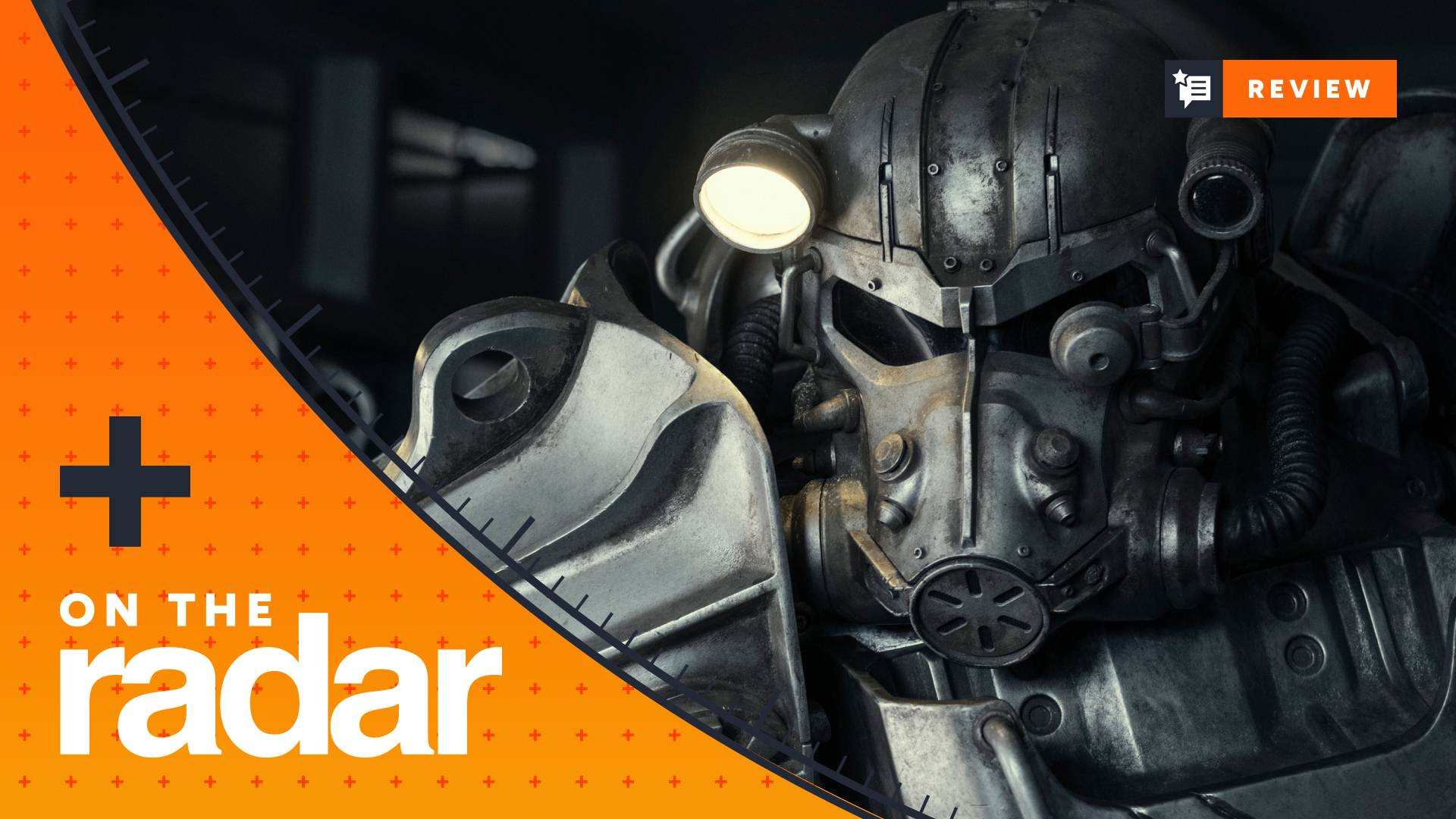Best graphics card 2025: the top GPU options I'd recommend for PC gamers
Here are the best graphics cards for gaming available now.


I'm not going to lie, picking the best graphics card in 2025 can be an absolute headache. Not only do you have to figure out which GPU will actually run the games you want to play at respectable resolutions, but then you have to wrestle with chaotic custom model pricing and, more often than not, launch stock scarcity.
To save you from getting hung up on choosing the best graphics card, I'm on the ground, testing and rounding up the top GPUs for you. If you go searching on the net, you'll likely be told that the monstrously expensive Nvidia GeForce RTX 5090 is the card to pick for gaming. However, most players aren't going to have over $2.000 to spend on a single PC upgrade, so I'm focusing on more affordable versions instead.
If you can find one for the right price, the best graphics card we've tested remains the Nvidia GeForce RTX 4090. Making sure you don't pay over the odds is key here, as while it has the potential to provide a better balance between price and performance than the current flagship, pricing is still a bit weird. If we're talking the best for most players, you'll want to look at the RTX 5080 and lower-spec cards, and I've got you covered with options across the board.
Quick list
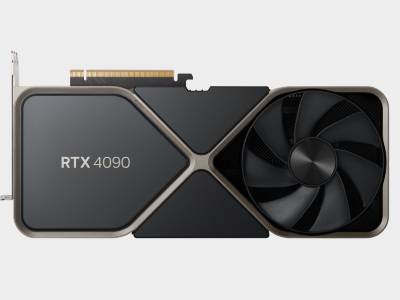
The best overall
The Nvidia RTX 4090 is still an absolute powerhouse GPU in 2025 thanks to its beefy specs.
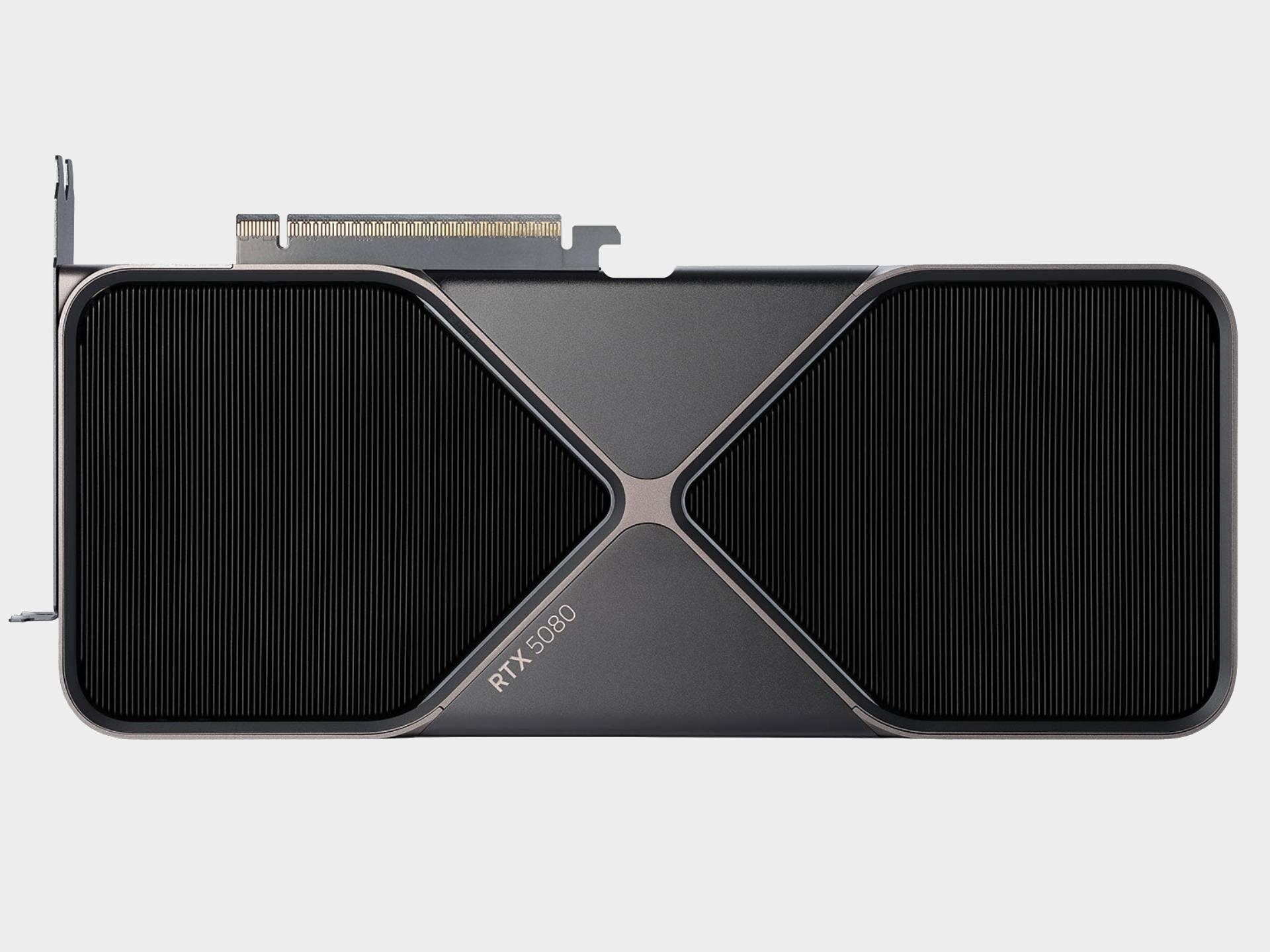
The best for most players
Nvidia's latest 80-class card packs a next-gen 4K punch and DLSS 4 abilities.
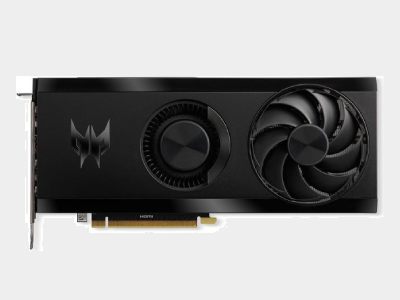
The Radeon RX 7600 is one of the cheapest new gen GPUs right now, and it provides a nifty 1080p PC experience.
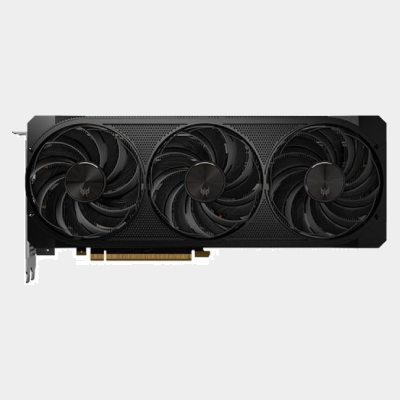
For the money, AMD's mid-ranger offers up great 4K capabilities.
Read more below
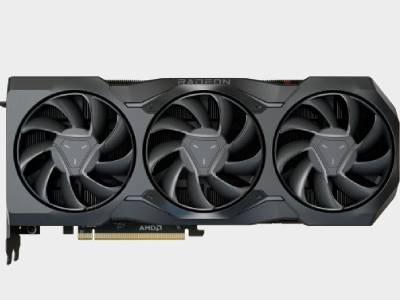
If you're looking for a reliable UHD experience, AMD's premium GPU has you more than covered.
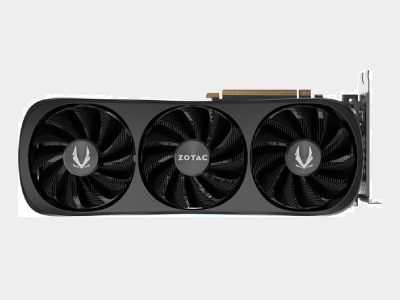
If you're aiming for QHD visuals that won't require settings tweaks, the RTX 4070 Super is the mid-range GPU to check out.
Load the next product ↓
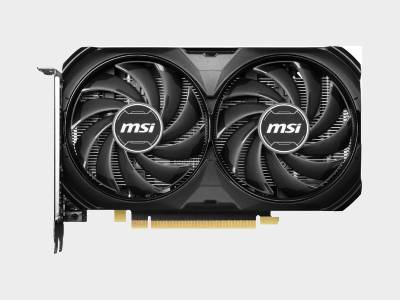
The RTX 4060 is one of the cheapest GeForce GPU on the block, but it still packs a 1080p punch.
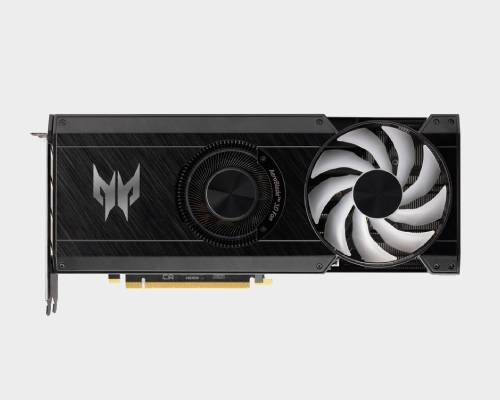
Packing 16GB VRAM and great 1440p capabilities, the Intel Arc A770 is phenomenal value if you can grab it at the right price.
Read more below

Phil has been using the latest graphics cards since the GeForce 256 was a thing, and those years of experience and expertise comes in handy when testing brand new GPU options. Our gaming PC expert spends hours benchmarking new Nvidia and AMD cards so that you don't have to, and while high frame rates are important, they'll always base their recommendations with approachable PC gaming in mind.
November 7, 2025 - Black Friday is looming, so I'm keeping an eye out for all my best graphics card picks in the sales. At the same time, I'm looking at contenders like the Radeon RX 9070 to see where they fit on the list, and I'm also preparing just in case Nvidia drops any RTX 50 Super models in the new year. For now, though, my selection below still serves their respective categories well, ands the key right now is using the sales to grab existing options for less.
The best graphics card overall
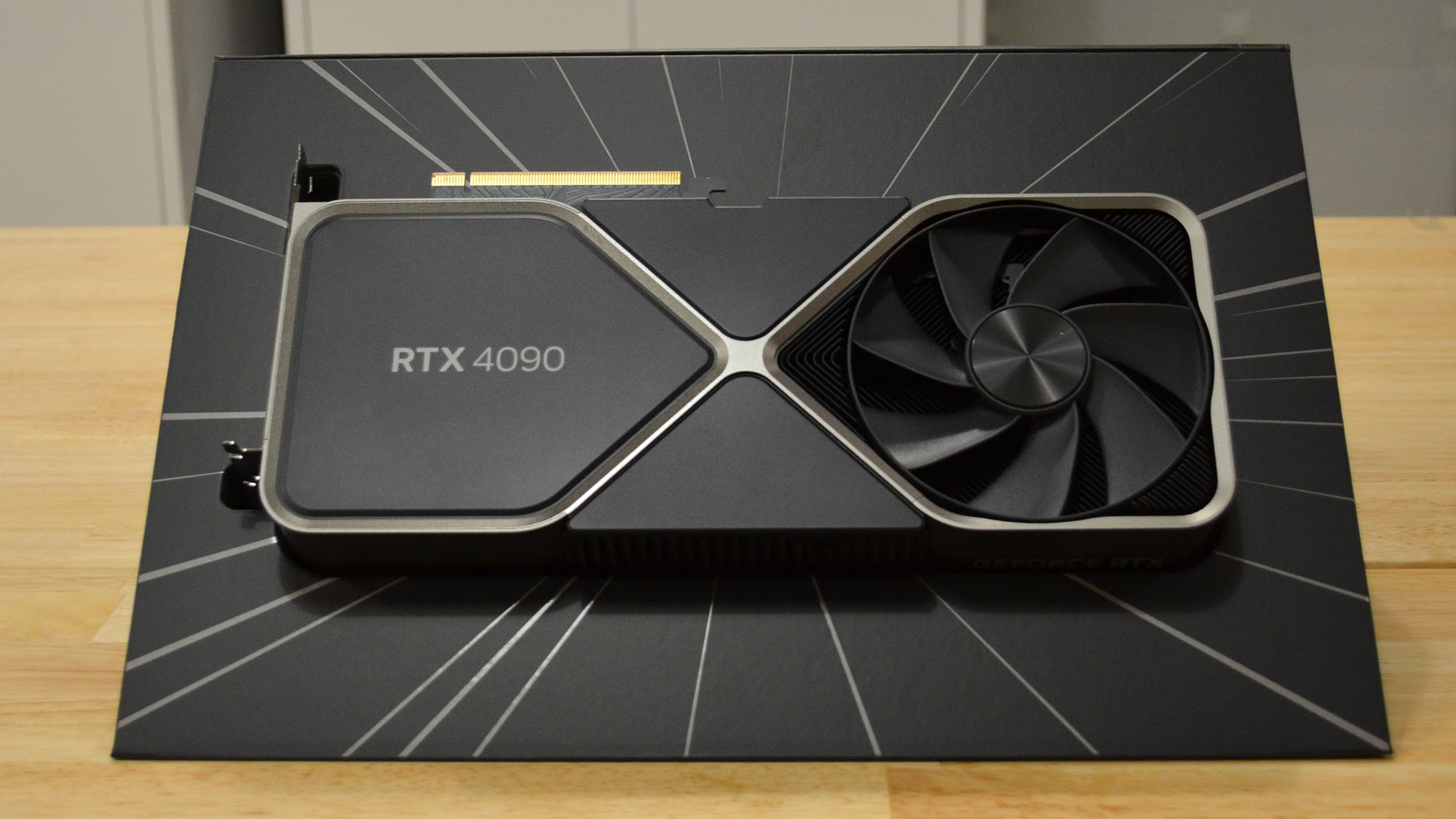
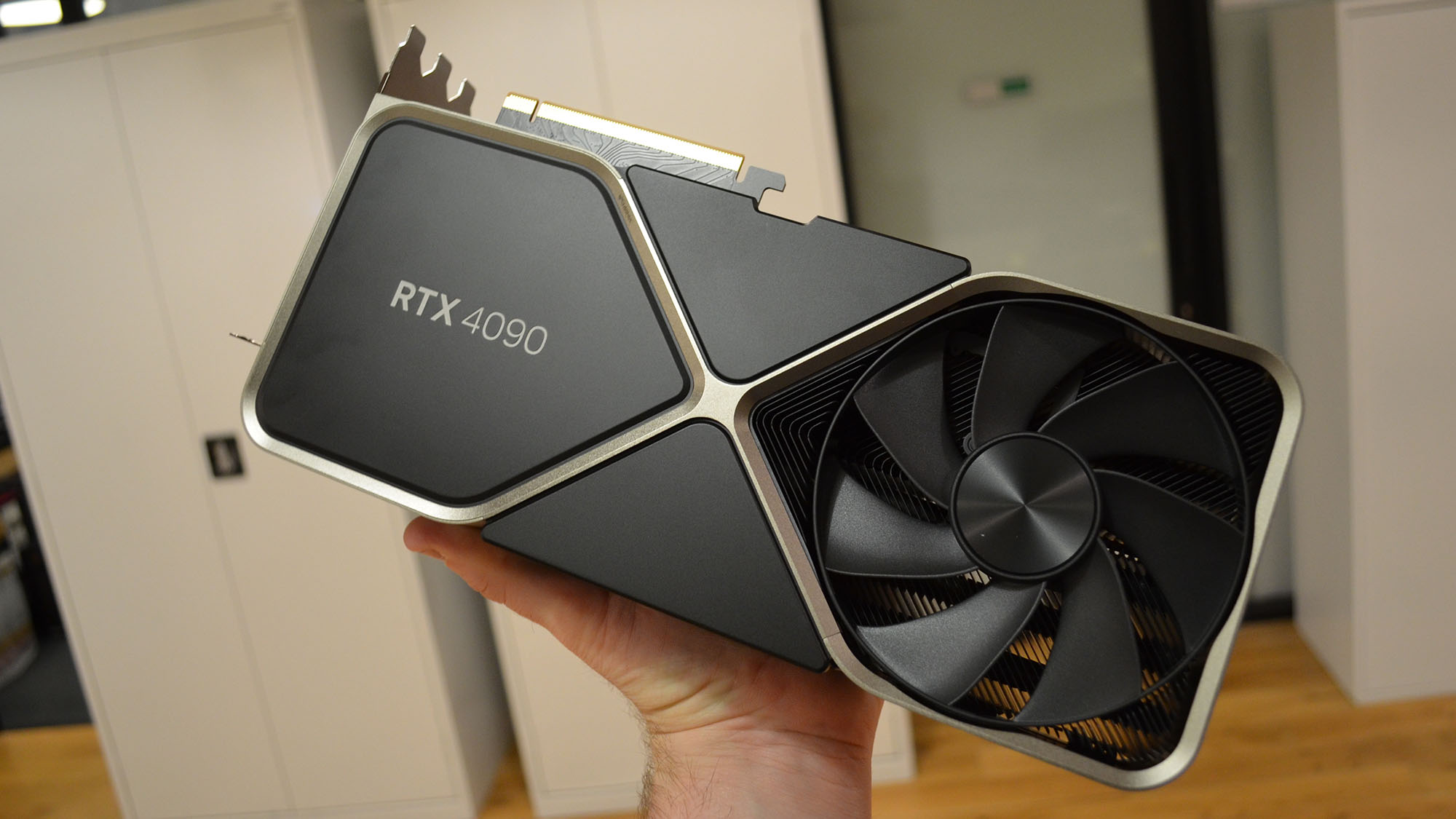
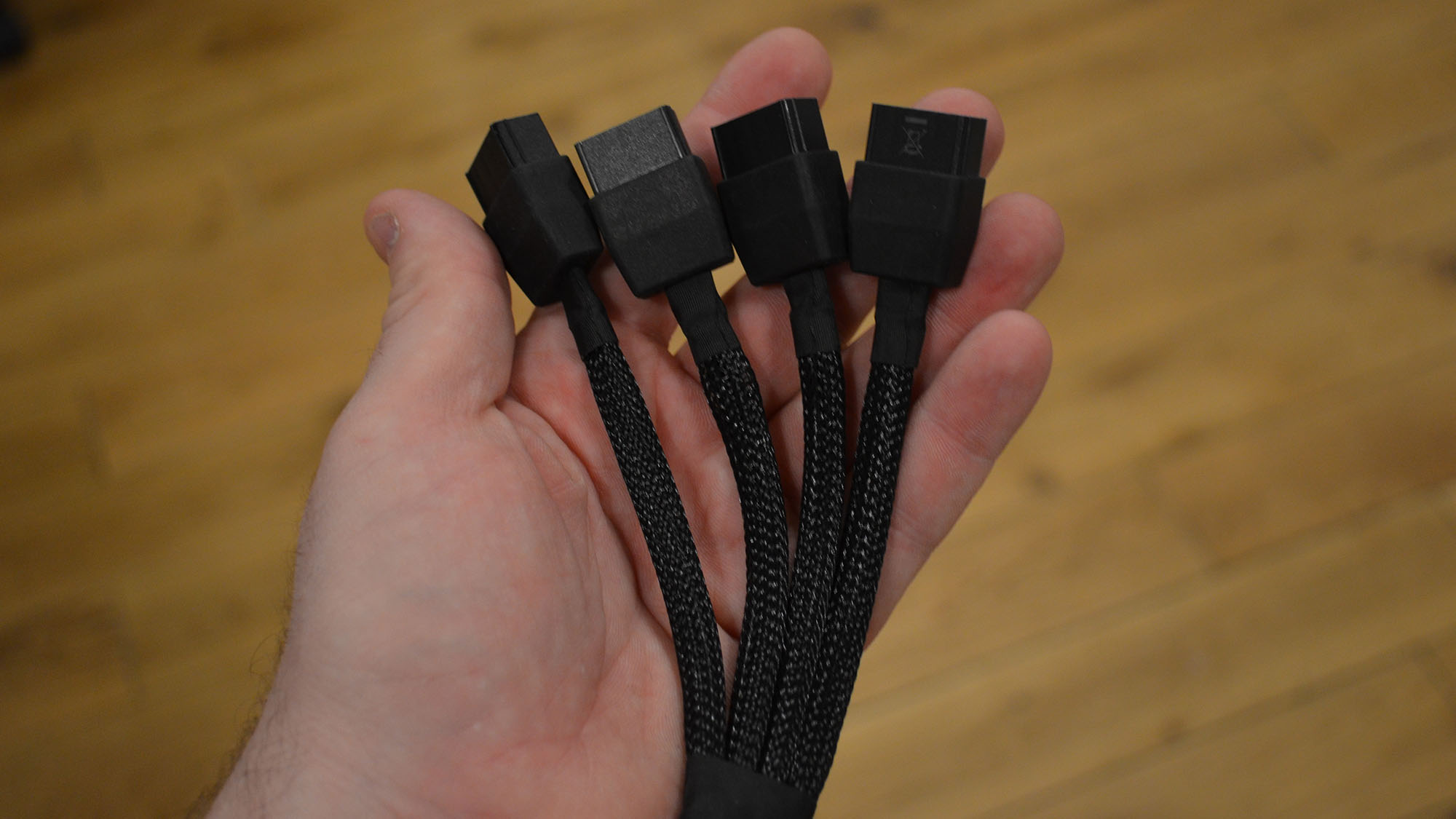
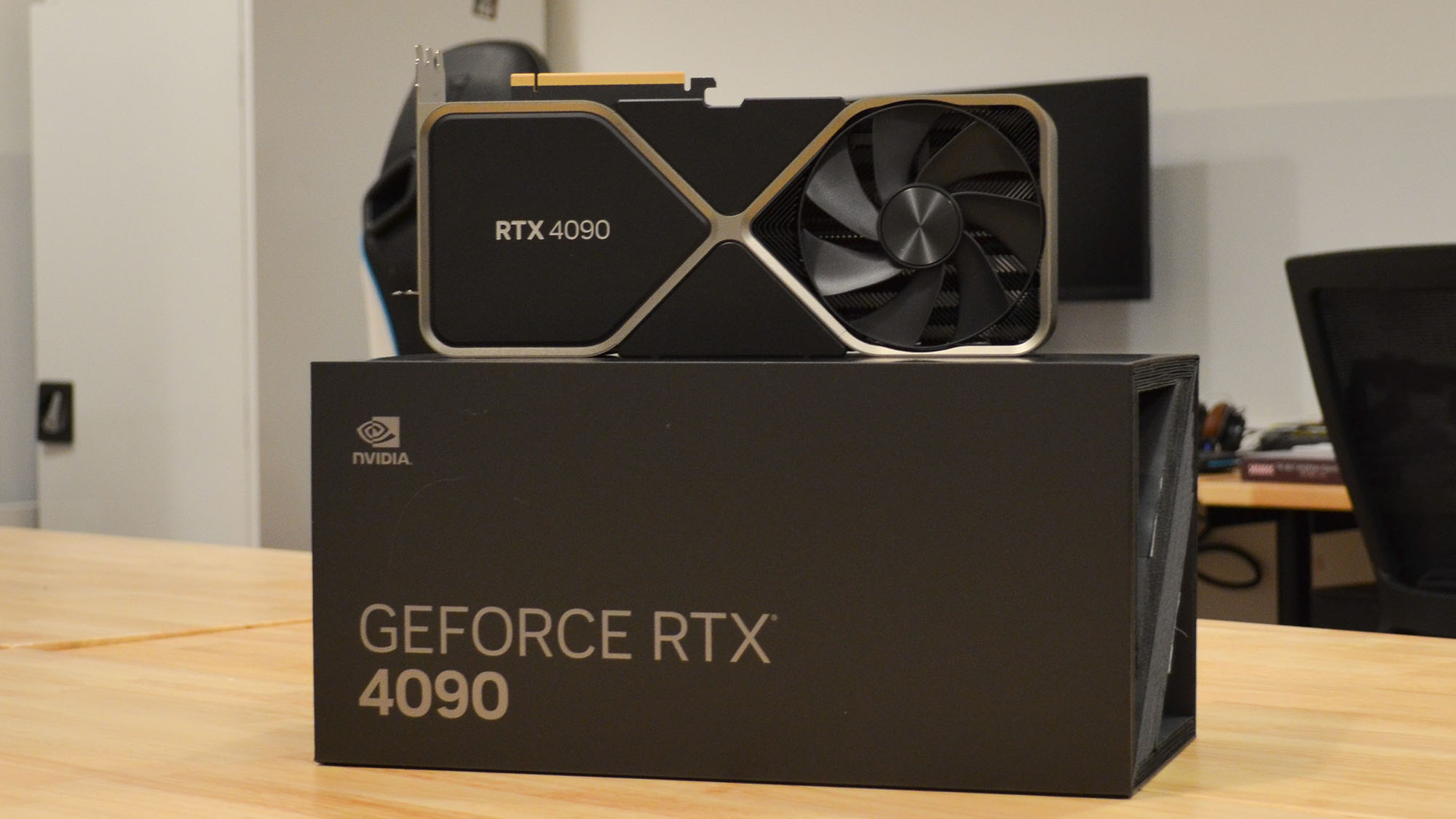
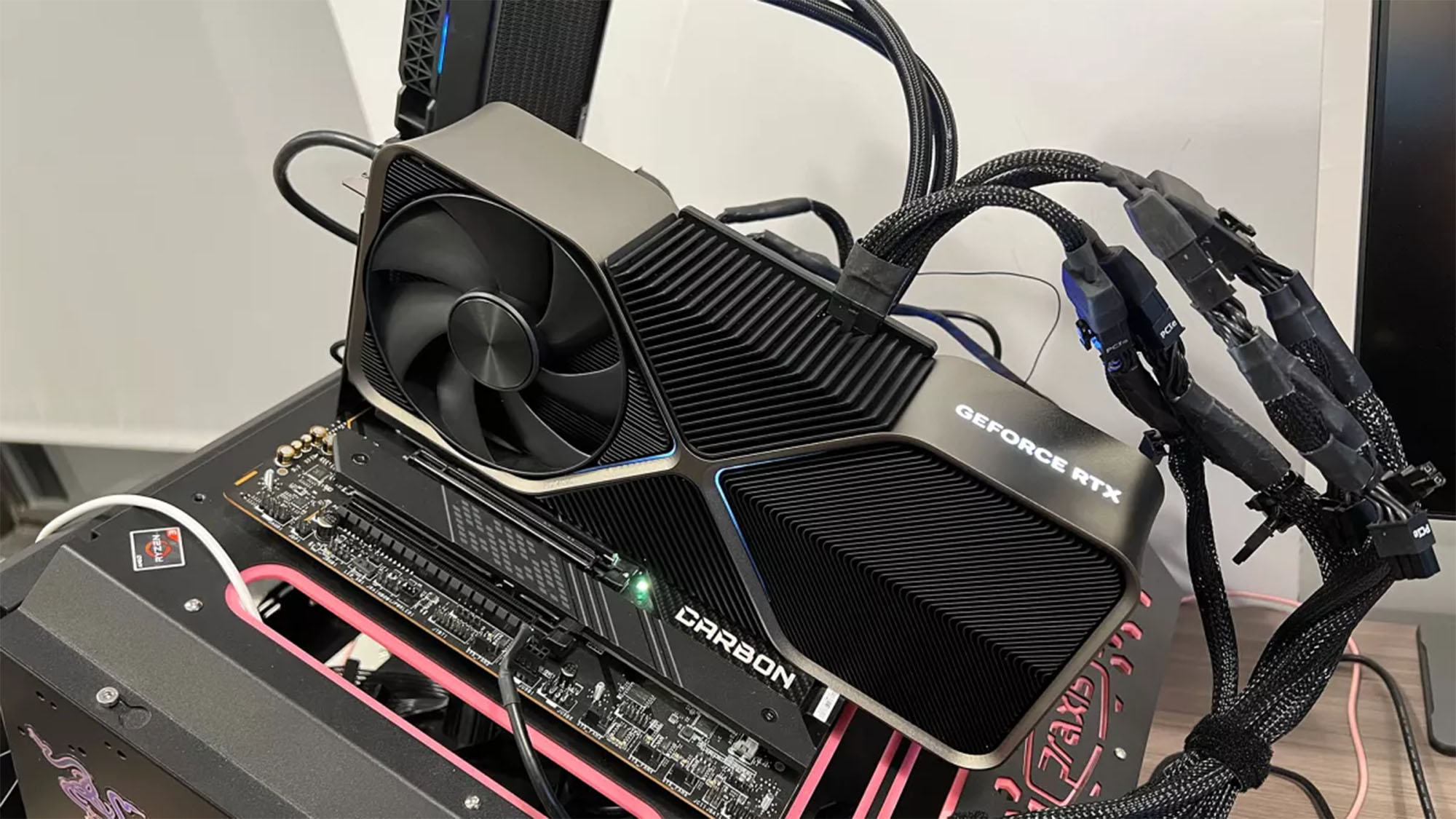
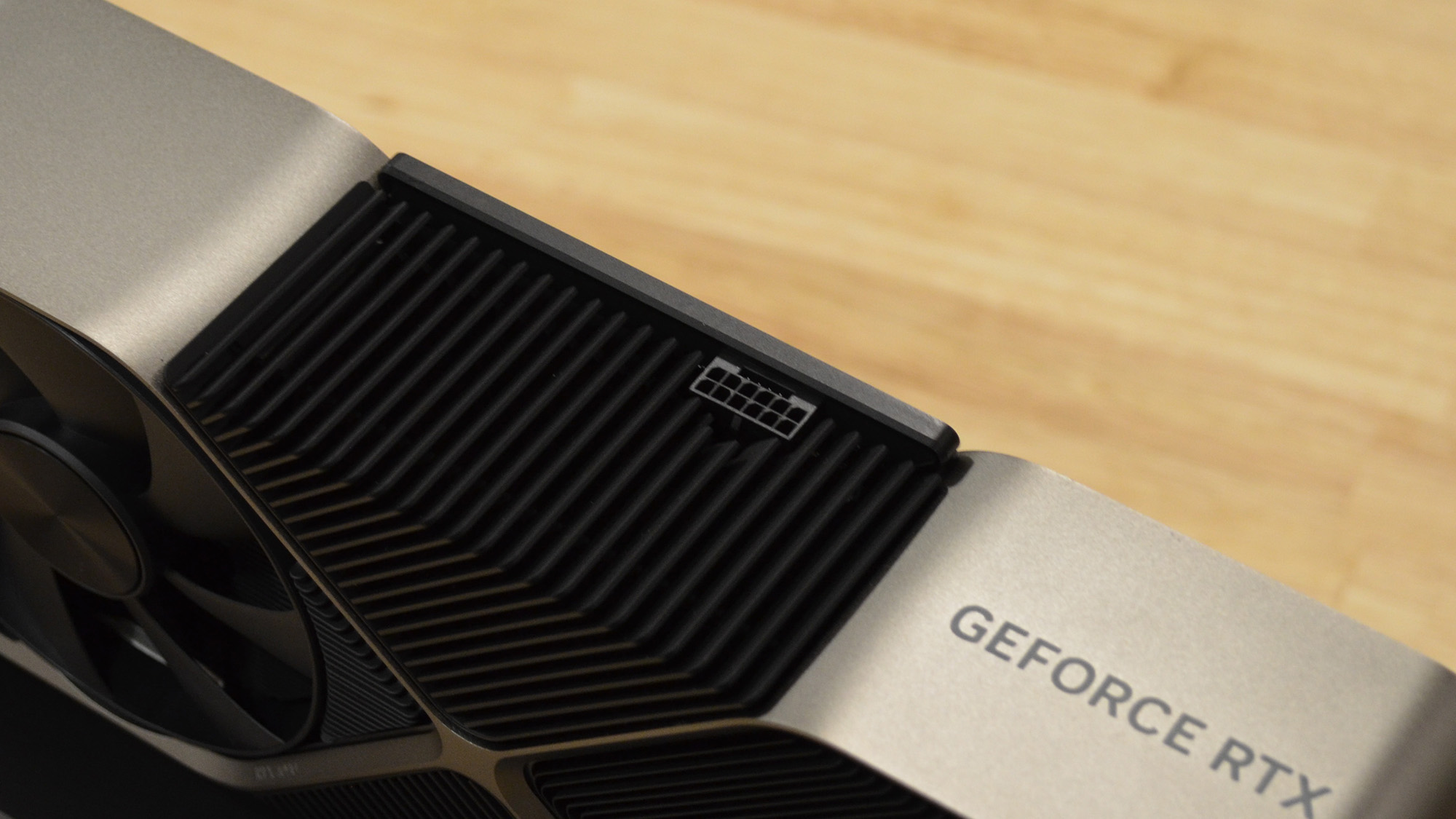
Specifications
Reasons to buy
Reasons to avoid
It'll soon be replaced by the RTX 5090, but the Nvidia GeForce RTX 4090 is the most powerful graphics card right now by a country mile, and is has undoubtedly changed the standards of PC gaming. Not only does it run circles around its predecessor, the RTX 3090 Ti, but it also benefits from new AI tricks that will help keep it on the throne for even longer. That said, the card's $1,499 / £1,649 MSRP means is firmly an enthusiast option.
✅ You want raw power: Nvidia's flagship graphics card can punch much harder than anything else on the market without using upscaling tricks.
✅ You play at 4K: You won't have to think about dialing back settings to maintain UHD visuals using the 4090, making it one of the first true 4K cards.
✅ You value ray traying: Out of every GPU right now, the 4090 is the one that can handle ray tracing and still maintain high frame rates at 4K.
❌ You aren't a PC enthusiast: Other graphics cards can reach well over 100fps at 4K, and Nvidia's flagship more caters to players looking for extreme performance regardless of price.
❌ You've got a small gaming PC: The RTX 4090 is extremely chonky, and that could stop you from squeezing it into small cases with only a few GPU slots available.
Features: Thanks to a 4nm GPU, the RTX 4090 packs in 52% more graphics processing CUDA cores than the RTX 3090 Ti, and it also runs 43% faster than the RTX 3090 Ti as well — all while drawing the same amount of power as the last-gen card. Despite its hardware prowess, some of the 4090's biggest strengths are found in the software side of things, as this card launched alongside Nvidia's Frame Generation tech, which works in conjunction with DLSS to boost fps beyond the imaginable.
Design: We checked out the RTX 4090 Founder's Edition when it arrived in 2022, and it's one of the best looking versions of the card out there. Nvidia's blend of silver and black metal help the shroud feel a bit more sophisticated than custom variants, and its illuminated logo steers clear of the usual gamer aesthetic. Its fans are also sensibly placed, but we're not too keen on both the placement and design of the GPU's 12VHPWR connector, which uses a dongle to bridge PSU compatibility.
Performance: In terms of gaming performance, it’s the only graphics card that can confidently game at a native 4K resolution with ray tracing without the help of DLSS. It’s more than 50% faster on average than the RTX 3090 Ti, and with DLSS 3 with full frame generation, the RTX 4090 can get as much as double the frame rate achieved with last gen’s DLSS 2.0.
Verdict: If you can comfortably afford an RTX 4090, you probably won't need to upgrade your GPU for the best part of a decade. While most screens out there largely stick to 4K, Nvidia's latest flagship GPU can actually handle 8K gaming, meaning it'll play nice with screens of the future that cater to beyond UHD. Not that we'd suggest picking one up for that purpose, as the RTX 5090 will send it into retirement.
Read more: Nvidia GeForce RTX 4090 review
Peformance | 5/5 |
Design | 4/5 |
Features | 5/5 |
Software | 5/5 |
Price | 3/5 |
The best graphics card for most players
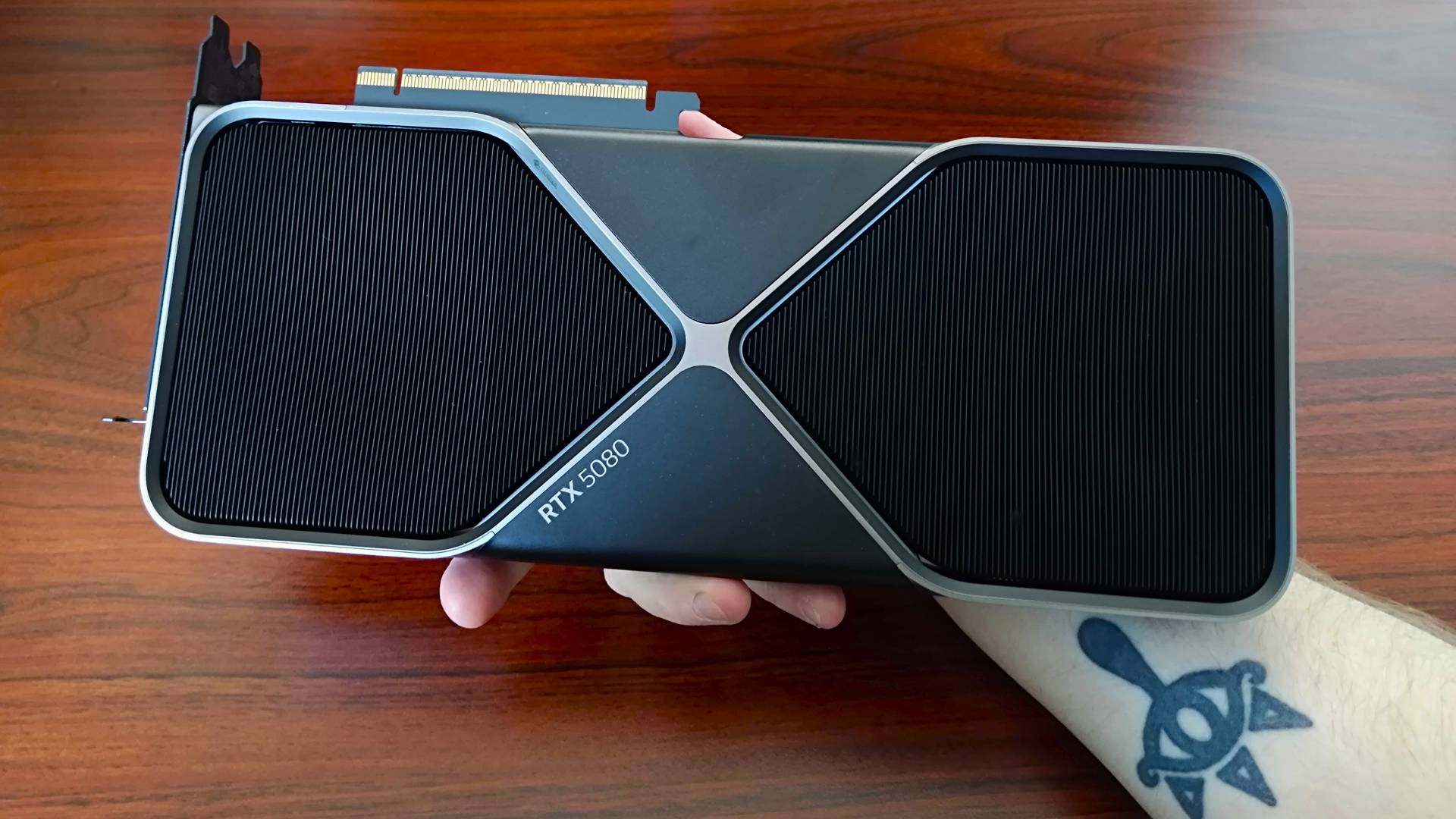

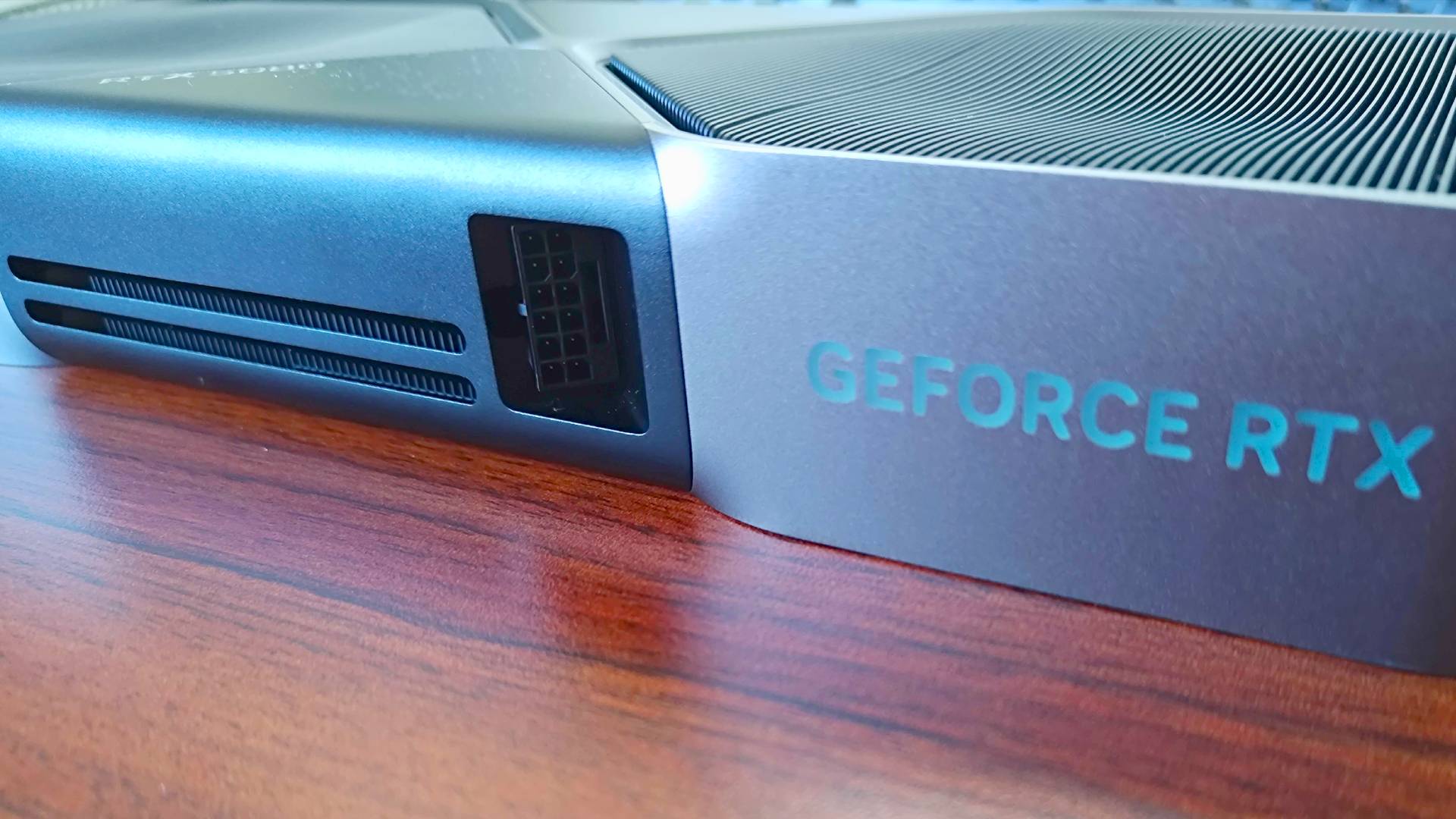
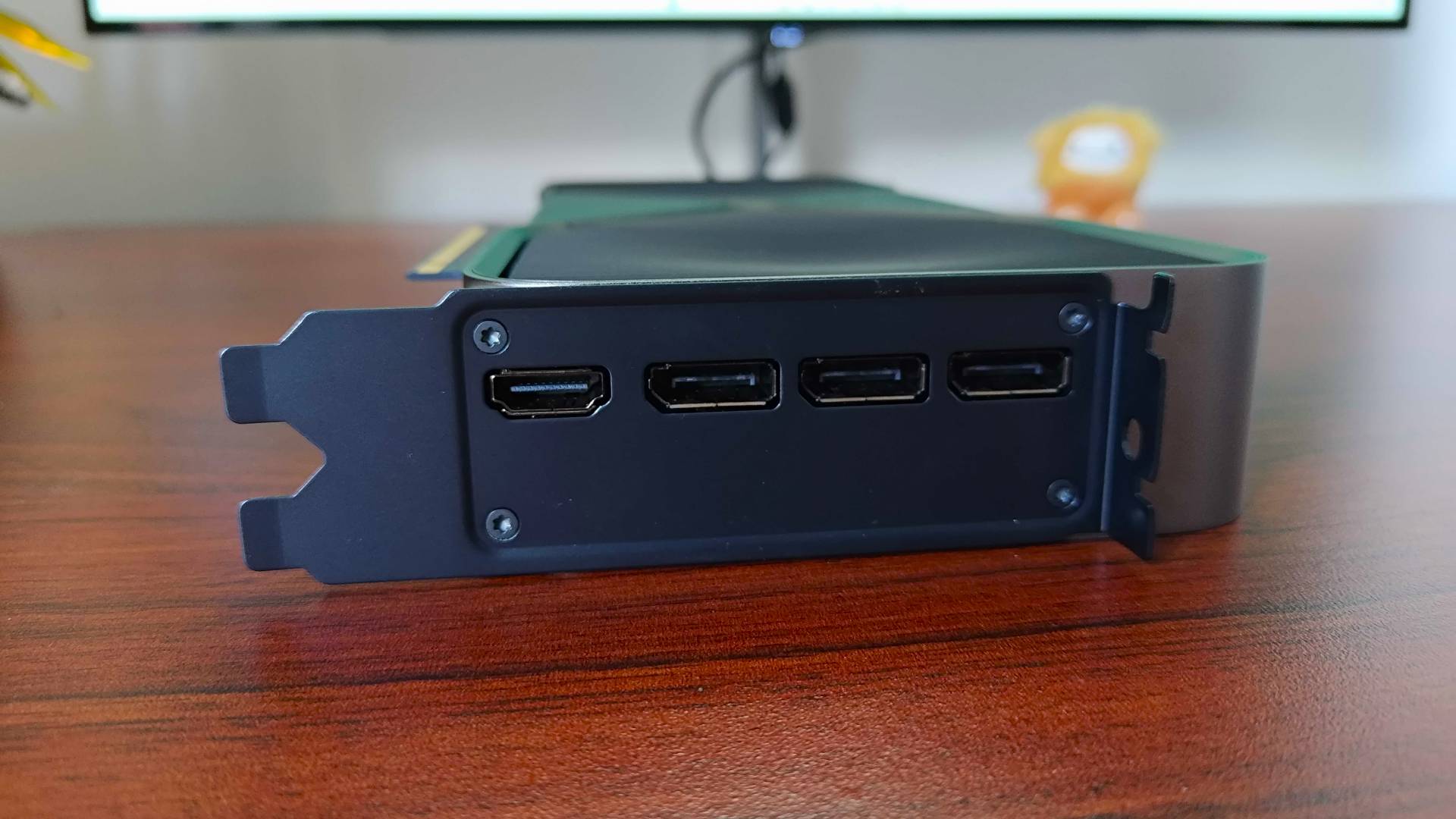
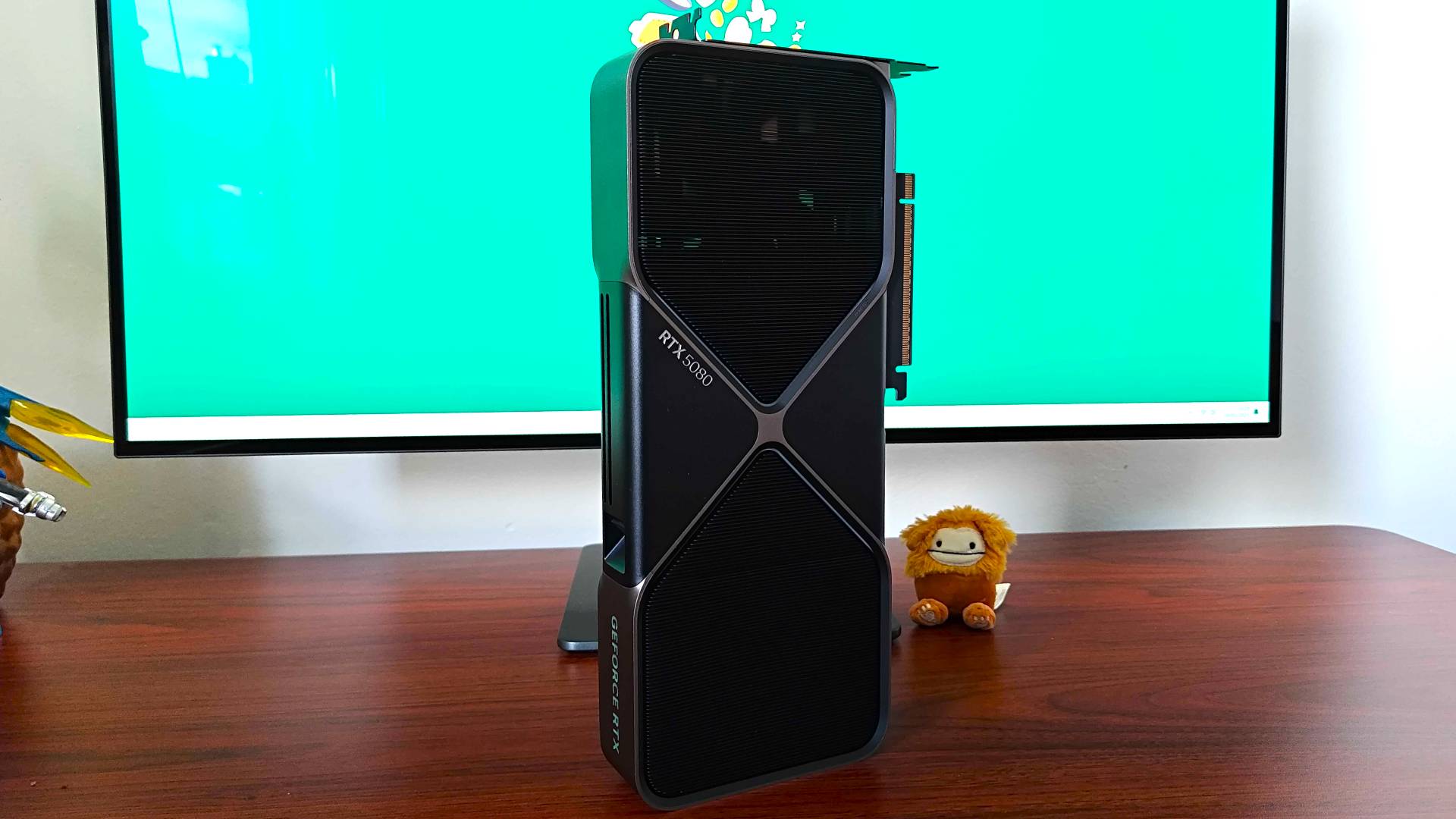
Specifications
Reasons to buy
Reasons to avoid
It's safe to say the Nvidia GeForce RTX 5080 is still a premium GPU, but the new Blackwell model is the card most players should aim for. Sure, if you've got at least $2,000 burning a hole in your pocket, you'll want to invest in the RTX 5090. However, I'd recommend the 80-class card first since it boasts new DLSS 4 superpowers and
✅ You want a 4K capable GPU: If you're looking to play using UHD resolutions and minimal compromise, the RTX 5080 will save you from tweaking settings to boost fps.
✅ You're willing to use DLSS: While the RTX 5090 will provide ridiculous frame rates in all the latest games, the RTX 5080 will still pull off spectacular results if you take advantage of DLSS 4.
✅ You're looking for a sleek card: Nvidia has made the Founders Edition RTX 5080 much smaller than even the last-gen RTX 4070 Ti, so this is a great option for cramped cases.
❌ You want the best 4K ray tracing results: If you want something that makes short work of path tracing at 4K without DLSS 4 enabled, the RTX 5090 might be a better fit.
❌ You're aiming to play at 1440p: Those of you who aren't fussed about 4K might be better waiting for the RTX 4070 or the slightly beefier RTX 4070 Ti.
Features: Just like the rest of the RTX 5000 crew, the RTX 5080 enters the scene with a new box of AI upscaling tricks. Dubbed DLSS 4, the next-gen version includes "Multi-frame Generation" support that'll enable you to boost fps even further using generated frames, and you'll encounter fewer visual quirks thanks to the new Transformer model under the hood. Simply put, by enabling 4X Frame Generation in supported games, you'll end up playing at much higher frame rates with less caveats than before.
DLSS 4 is exclude to RTX 50-series cards, making it a huge selling point for the next-generation range. There are players who will argue that Multi-Frame Generation isn't a true performance boost since it's artificially predicting visuals. But, it's hard to ignore the benefits when it comes to single player games, and with a Nvidia Reflex 2 on the way to kick latency to the curb, it could even come in handy for fast-paced shooters.
Design: Nvidia has found a sweet spot with its Founders Edition design this generation, resulting in an RTX 5080 that is much sleeker than its 4080 predecessor. The card will only take up two PCIe slots in your PC case, which should create less havoc if you're currently using an older GPU. That said, keep in mind that if you go for a custom overclocked card, you might end up with something the same size as the RTX 4090 since it'll feature extra cooling.
That's not to say the RTX 5080 hasn't got a lavish fan setup, as Nvidia's redesign enables the card to keep itself much cooler using dual-fans. The GPU maker has actually split its main PCB up into three parts this time around in a bid to direct airflow and position heatsinks more efficiently, resulting in a card that's better at fighting off heat.
As for power, you'll have to use Nvidia's new 12-pin connector like before. For most of you, that'll mean using the included PSU cable dongle in the box, so keep that in mind if you've got a specific cable management strategy. Thankfully, the green team has placed the GPU's socket at an angle to help direct cabling out of the way and prevent any damage during installation. While the company has resolved the melty cable issues associated with Lovelace cards, this extra step will help ensure it doesn't happen again via wear and tear.
Performance: I've spent a lot of time benchmarking both the Founders Edition RTX 5080 and the custom PNY RTX 5080 OC, and it's safe to say both pack beastly 4K capabilities. The performance jump between the RTX 4080 Super and the new Blackwell GPU is a bit modest, but you're still getting faster visuals than before and the option to boost things even further using DLSS 4.
To paint a picture of RTX 5080 performance, I was able to run Cyberpunk 2077 with 4K Ultra settings enabled at 71fps with no AI upscaling assistance. That's a pretty nice uplift compared to 57fps using the RTX 4080 Super, but taking advantage of 4X Multi-Frame Generation ramps that figure up to a remarkable 316fps. Those same benefits apply to outings like Dragon Age: The Veilguard, which leaped from a native 77fps to 288fps with DLSS 4 on, hammering home the benefits of the new features.
Naturally, you will be able to spot discrepancies with DLSS 4 if you squint hard enough, but I only really noticed a difference in fast paced scenarios. During ordinary gameplay, you're unlikely to notice anything that'll completely break your immersion, so it's hard to argue against using the AI tools. What I will say is that support isn't a given right now in every single new game, and while native performance in the likes of Total War: Warhammer 3 is pretty impressive (an 87fps average at 4K ultra), it might not always be there to boost your frame rates.
Verdict: It's early days for Nvidia's next-gen GPU line-up, but the RTX 5080 is the class of graphics card most players should aim to get hold of. It'll pack more than enough performance to handle the latest PC games in 2025 whether you use DLSS 4 or not, and it should hold up pretty well in the future too. You will want to still try and pick up an RTX 4090 or the new RTX 5090 if you want more than 16GB VRAM, but with AI changing the foundations of PC performance, games might not need as much memory compared to previous years.
Read more: Nvidia GeForce RTX 5080 review
Peformance | 5/5 |
Design | 5/5 |
Features | 5/5 |
Software | 5/5 |
Price | 3/5 |
The best budget graphics card
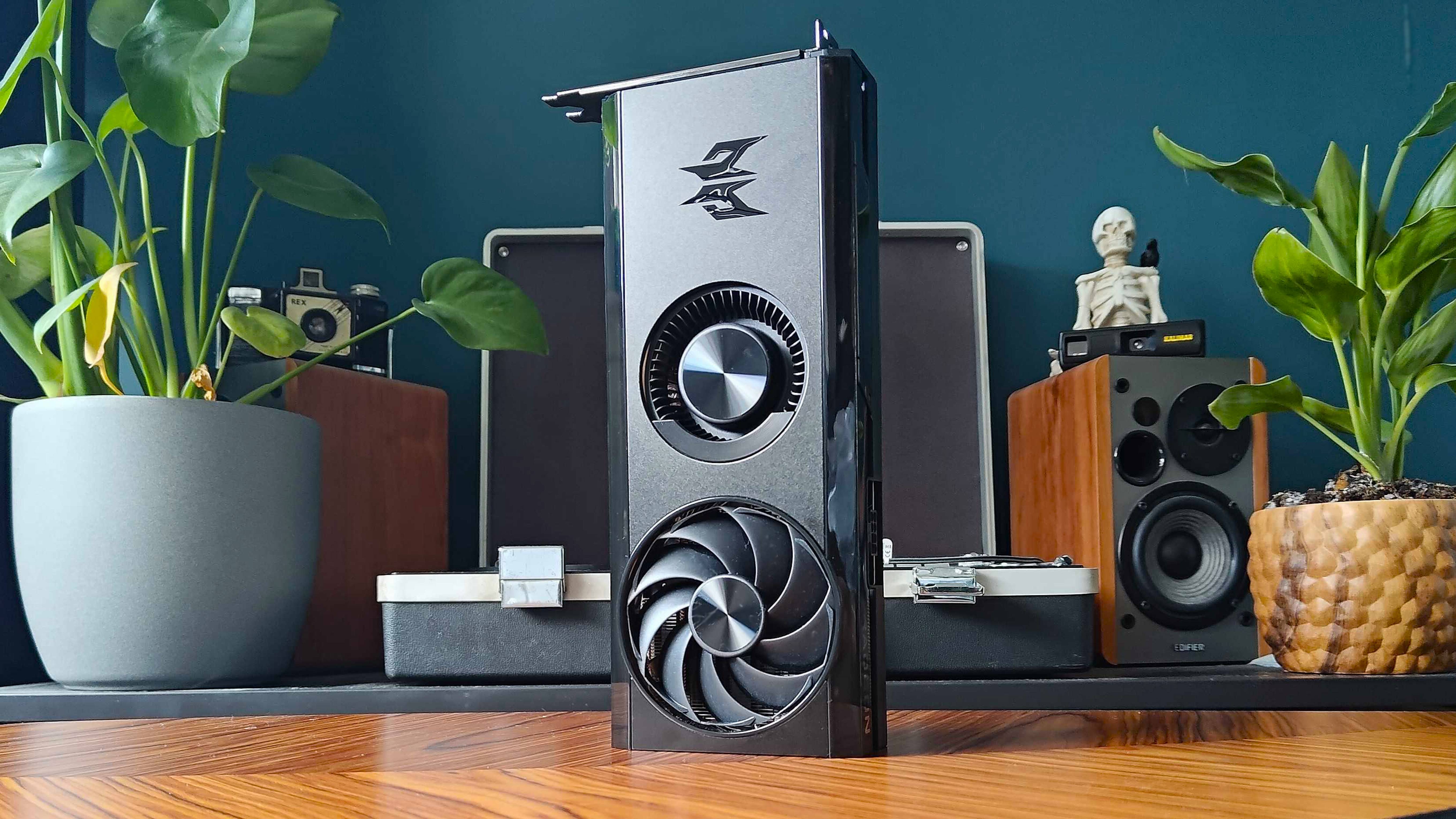

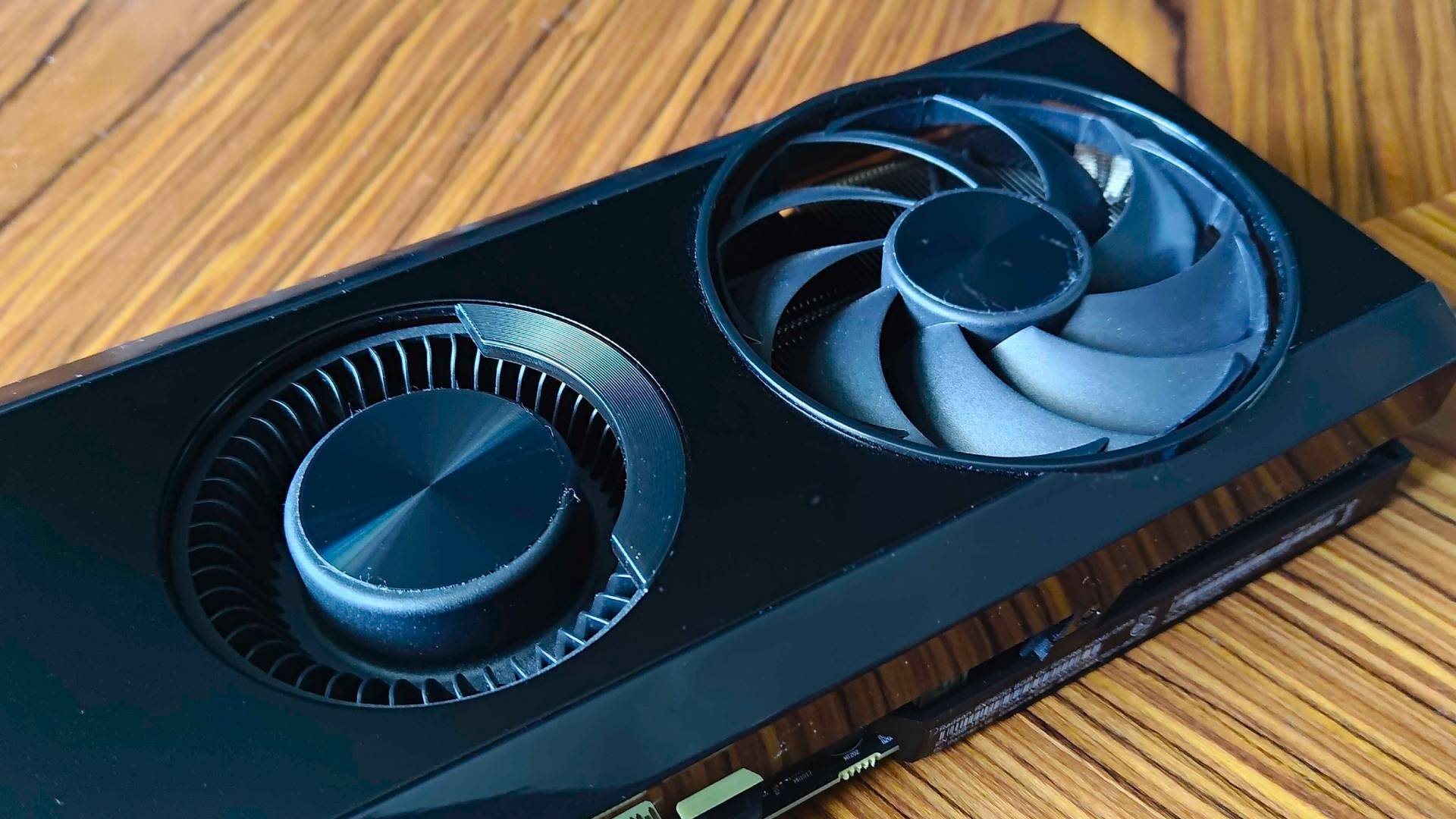
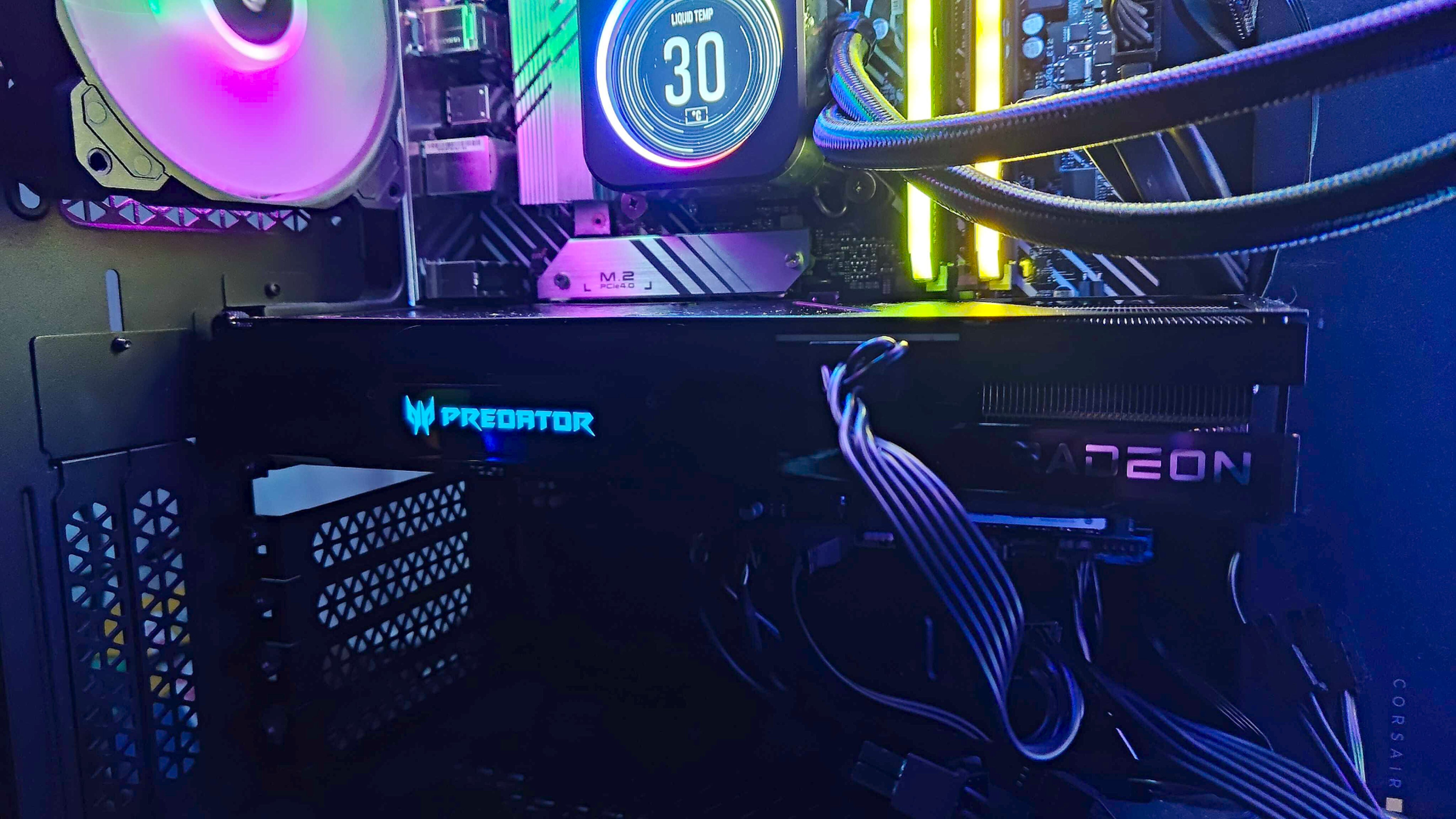
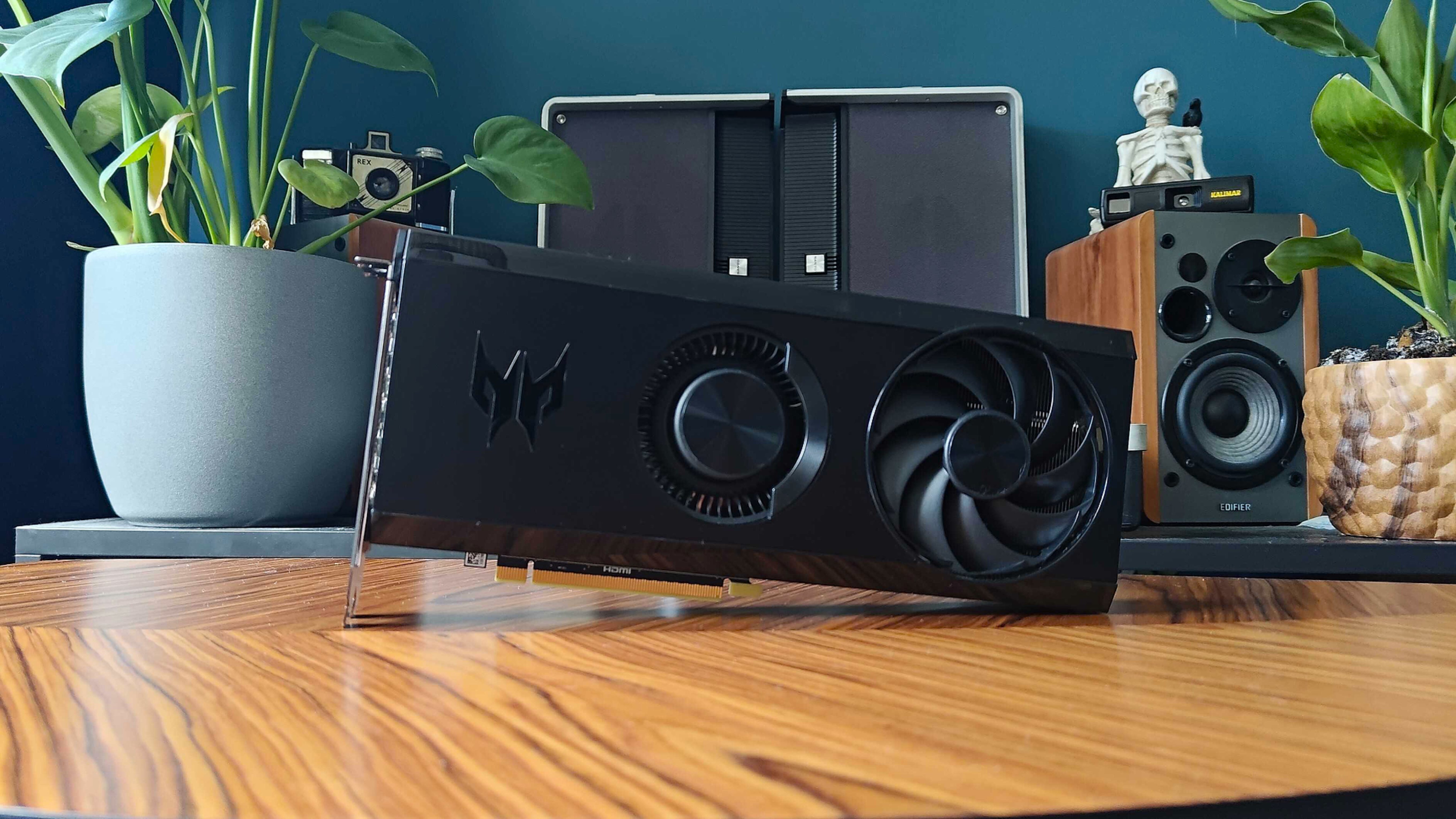
Specifications
Reasons to buy
Reasons to avoid
It's needless to say the AMD Radeon RX 7600 isn't going to win any fights with performance, but it boasts a ferociously competitive MSRP. For often less than $260 / £250, you'll be able to run all the latest games at 1080p and take advantage of team red's neat collection of FSR 3 tricks.
✅ You need cheap 1080p performance: For the price, this AMD GPU will provide a reliable entry-level experience when handling new releases.
✅ You want to try out FSR 3: AMD's RDNA 3 tools include driver-level Frame Generation, meaning you can technically boost fps in any PC game.
✅ You want to avoid PSU dongles: The RX 7600 uses a traditional 8-pin power connector, which could make managing cables a lot easier.
❌ You want the best 1080p experience: This entry-level GPU isn't always able to keep up with its competition at 1080p, even though it still provides respectable results.
❌ Ray tracing is a must: You will be able to switch on ray tracing with this card, but it will affect performance more than with some options out there.
Features: Armed with a Navi 33 RDNA 3 chip, the Radeon RX 7600 serves as AMD's cheapest graphics card this generation. That does come with some caveats, as you'll have to make do with just 8GB GDDR6 VRAM and limitations in terms of ray tracing. However, tapping into features like FSR 3 and Fluid Motion Frames can make all the difference, especially since you can use Frame Generation in every game at a driver level. That in itself comes with latency and stability caveats, but no other GPU maker has attempted a similar approach as of yet.
Design: The specific model we tested for out review is the Acer BiFrost RX 7600, and the card's custom blower and fan combo is pretty effective. We found that temperatures stayed chilly even when under intense load, and it's nice to see that traditional methods of GPU are still around in 2024. The GPU's shroud is pretty minimalist, but a mix of glossy and matte plastics help give it a premium vibe, despite costing less than alternatives.
Performance: It probably won't come as a shock to hear the RX 7600 isn't the most powerful GPU around, but there's a lot to respect considering the low cost of some models. Demanding games like Returnal managed to respectable average frame rates of 84fps at 1080p, and actually pulled off 60fps at 1440p. Admittedly, it's main rival, the RTX 4060, pulls ahead slightly in similar tests, but Nvidia's contender comes in at over $50 more depending on the model.
Verdict: Out of every graphics card out right now, the AMD Radeon RX 7600 ultimately serves as the best budget option for well under $300. Versions like the Acer Bifrost will set you back a bit more, so that's worth weighing up while browsing. Still, this card is one to watch if you like to hold off until Black Friday, and it could end up providing an even better experience as more FSR 3 features roll out.
Read more: AMD Radeon RX 7600 review
Peformance | 3/5 |
Design | 4/5 |
Features | 4/5 |
Software | 5/5 |
Price | 5/5 |
The best graphics card for under $500
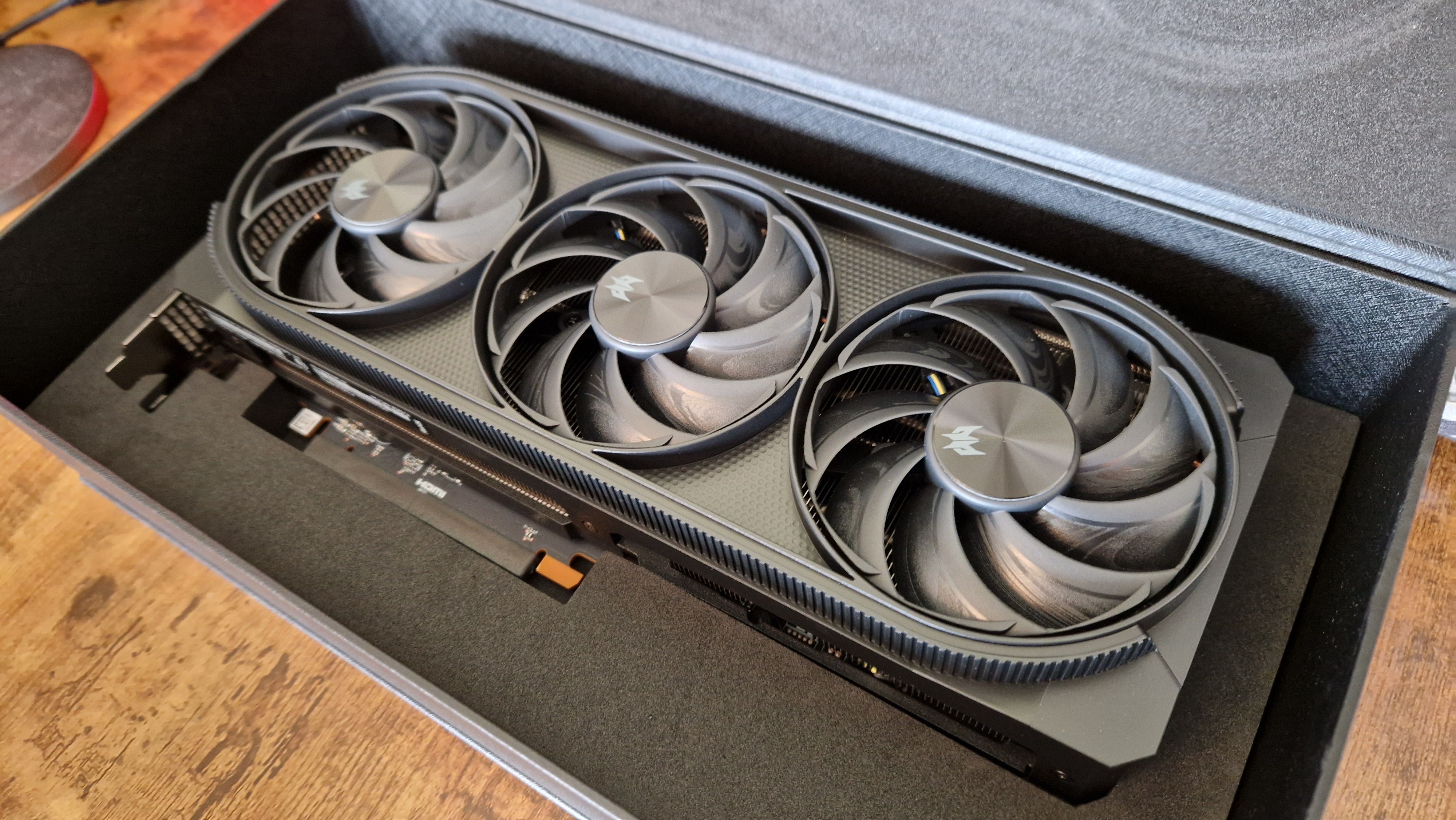
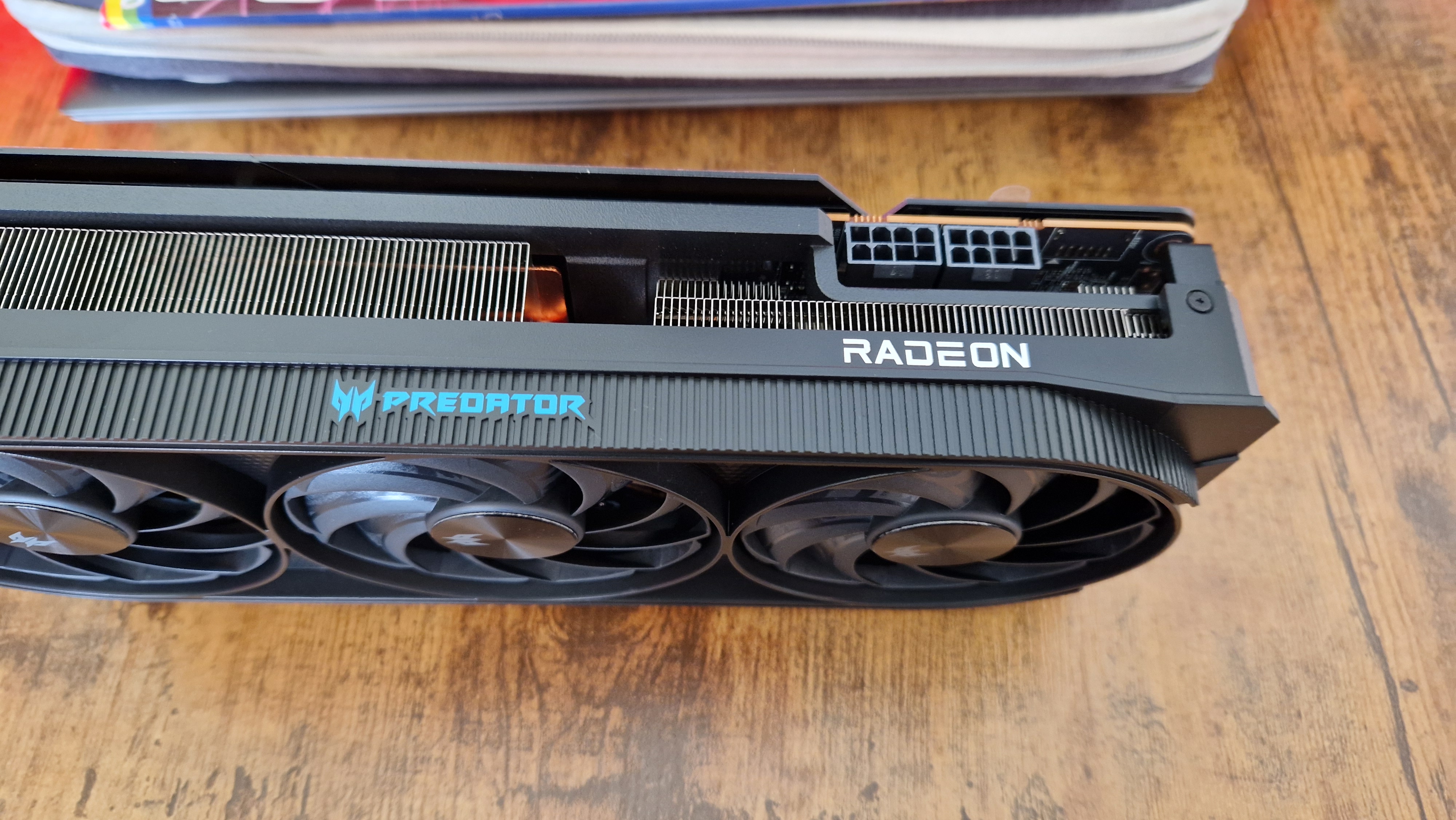
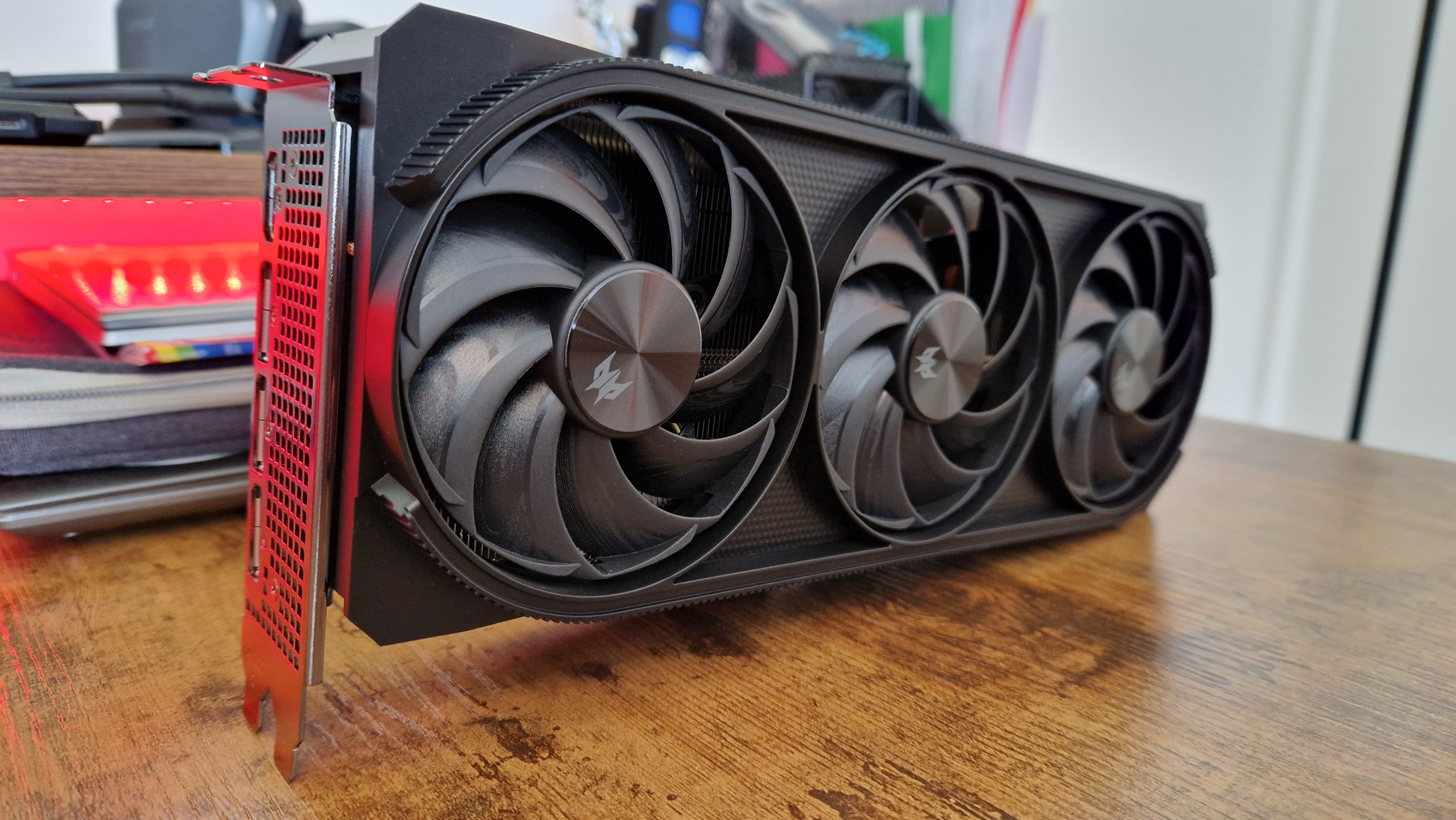
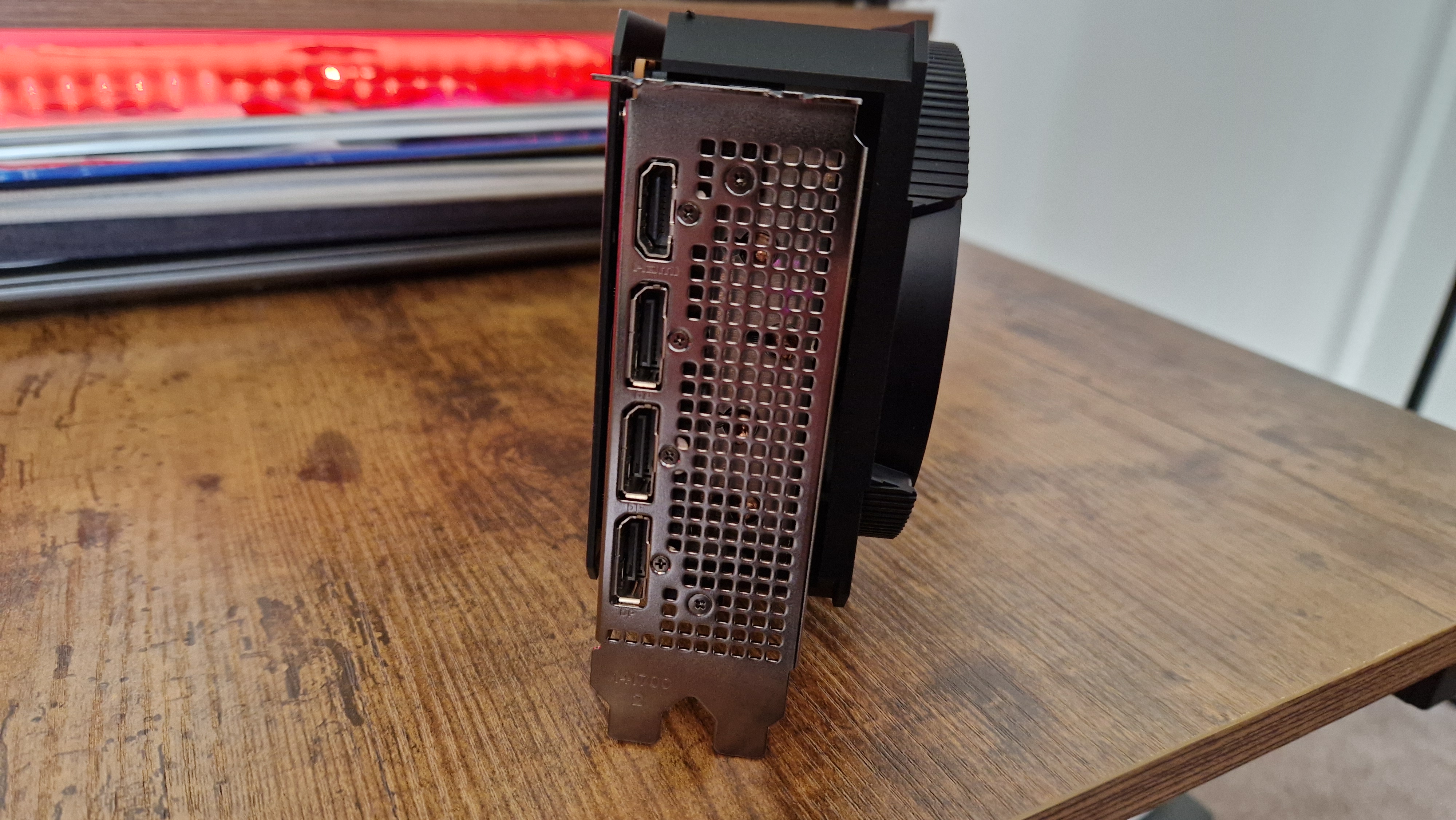
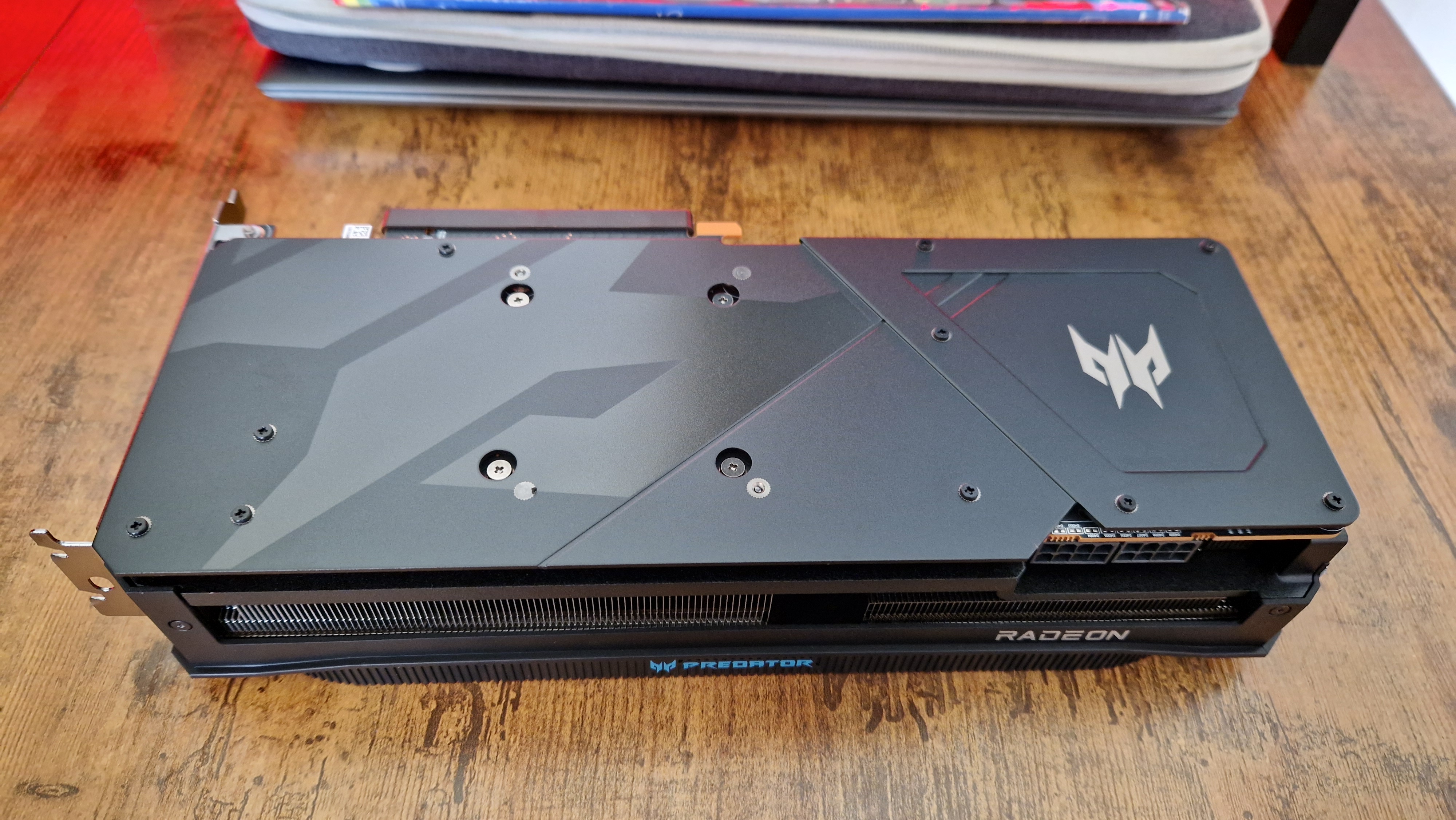
Specifications
Reasons to buy
Reasons to avoid
Grabbing a graphics card for under $500 in 2024 isn't always easy, especially if you still want to hit 4K in the latest games. However, the AMD Radeon RX 7800 XT provides commendable specs and performance headroom while still hitting a sweet price spot, even if its ray tracing capabilities are somewhat behind its green rivals.
✅ You want affordable 4K: If you're hellbent on hitting UHD resolutions while spending under $500, this card will check your boxes.
✅ You willing to use FSR 3: Taking advantage of AMD's upscaling will ultimately make a difference, especially if you don't like to compromise on settings.
✅ You want more VRAM: This mid-range card comes armed with 16GB VRAM, which may help put your mind at ease if you're worried about future memory-munching games.
❌ You want proper 4K: If you want to hit UHD in every PC game guaranteed for at least the next 12 months, you'll want to spend a lot more on a premium option.
❌ Ray tracing is mandatory: The 7800 XT can't pull off tremendous RT results without compromise, so it's not the best option for those of you who like fancy lighting.
Features: Kitted out with a Navi 32 XT GPU and 16GB GDDR6 VRAM, this mid-range graphics card won't have an issue hitting new-release system requirements. Of course, just like the rest of the current-gen Radeon range, this card also has FSR upscaling to fall back on, and new Frame Generation tricks offer up a multitude of ways to boost fps in different scenarios.
Design: We specifically took Acer's Bifrost RX 7800 XT model for a test drive this time around, but this version sticks with what is a fairly standard tri-cooling solution this time around. For a card of this calibre, it's probably wise not to experiment with a blower fan, and the GPU's larger size means this approach will look more ordinary inside your rig. Subtle ridges and grill marks help add a bit of flavor to what is otherwise a vanilla looking component, but its basic design will appeal to some enthusiasts out there looking to avoid flashy parts.
Performance: While 4K is something high-end cards are designed for, cheaper alternatives like the RX 7800 XT prove you can achieve UHD gaming on a mid-range system. In the benchmarks, we managed to hit over 60fps in Returnal, and Hitman 3 flourished at over 130fps. More demanding releases like Shadow of the Tomb Raider and Total War: Warhammer 3 did take somewhat of a beating at higher resolutions, but switching on FSR did help keep every tested game above 60fps.
Verdict: There are undoubtedly better graphics cards out there, but for under $500, the 7800 XT has an impressive performance punch. Naturally, graphics card prices are ever-changing, so we can't promise we won't opt for an Nvidia equivalent for better ray tracing performance in the future.
Read more: AMD Radeon RX 7800 XT review
Peformance | 4/5 |
Design | 4/5 |
Features | 4/5 |
Software | 5/5 |
Price | 4/5 |
The best 4k graphics card
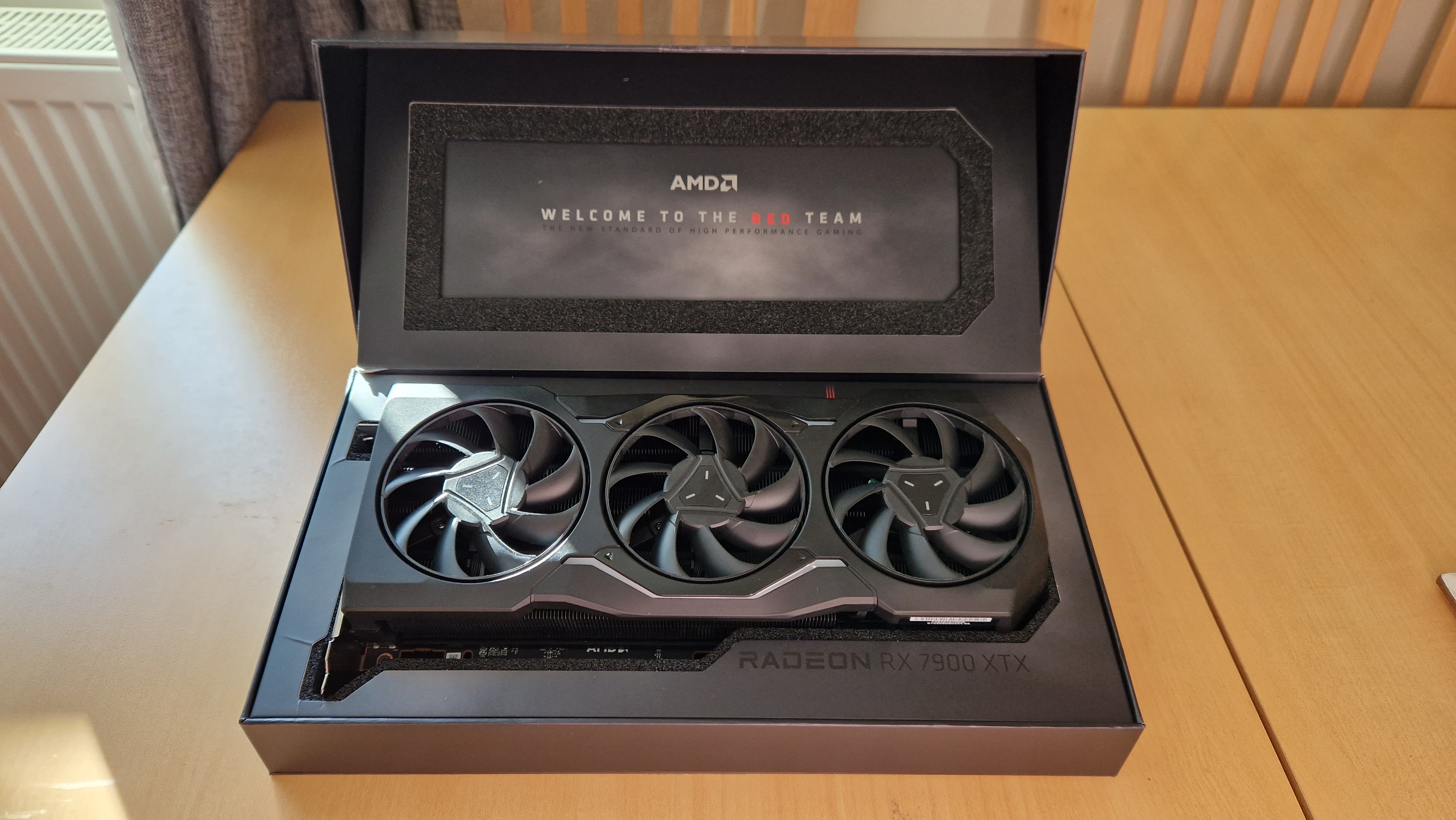
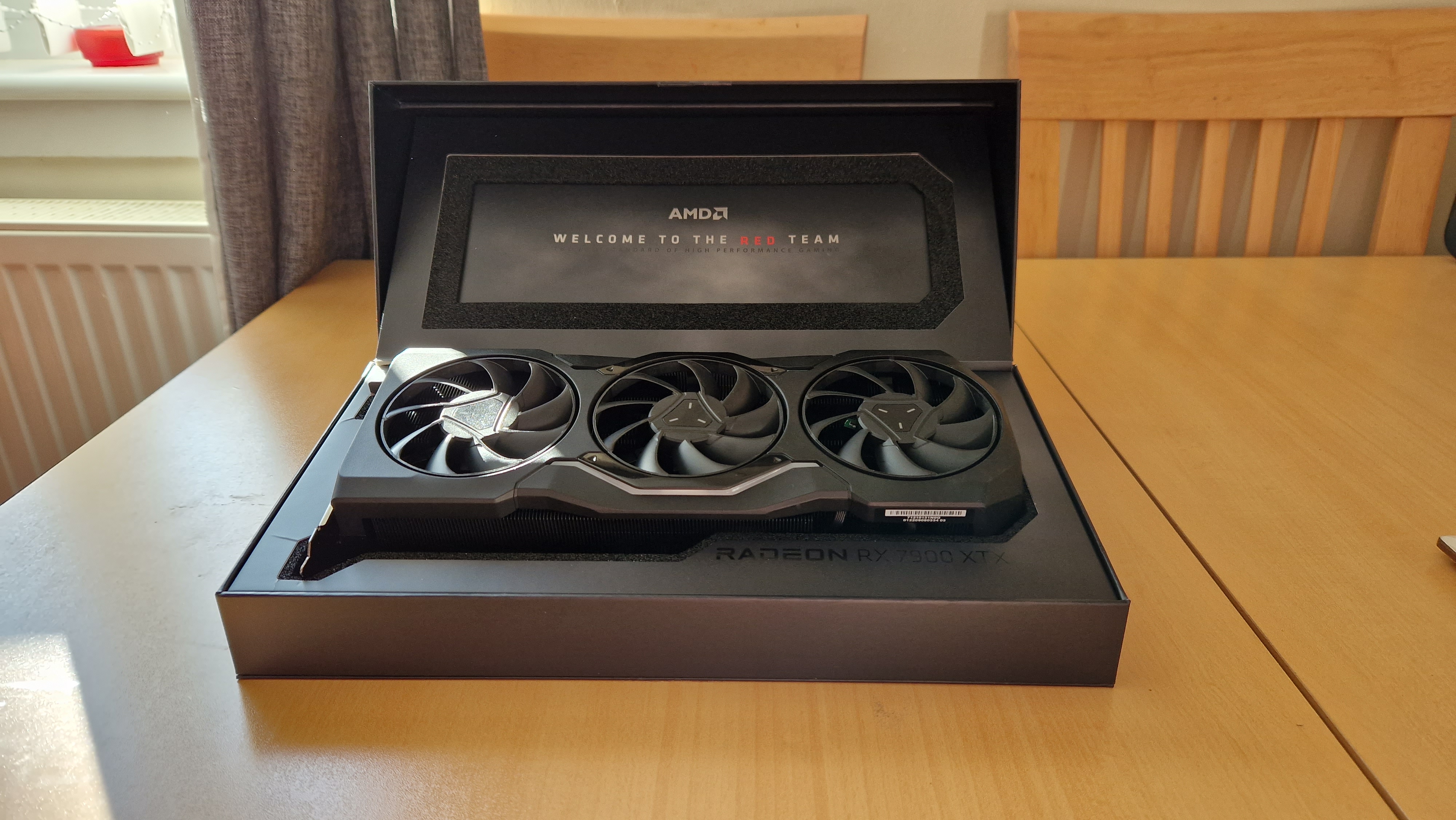
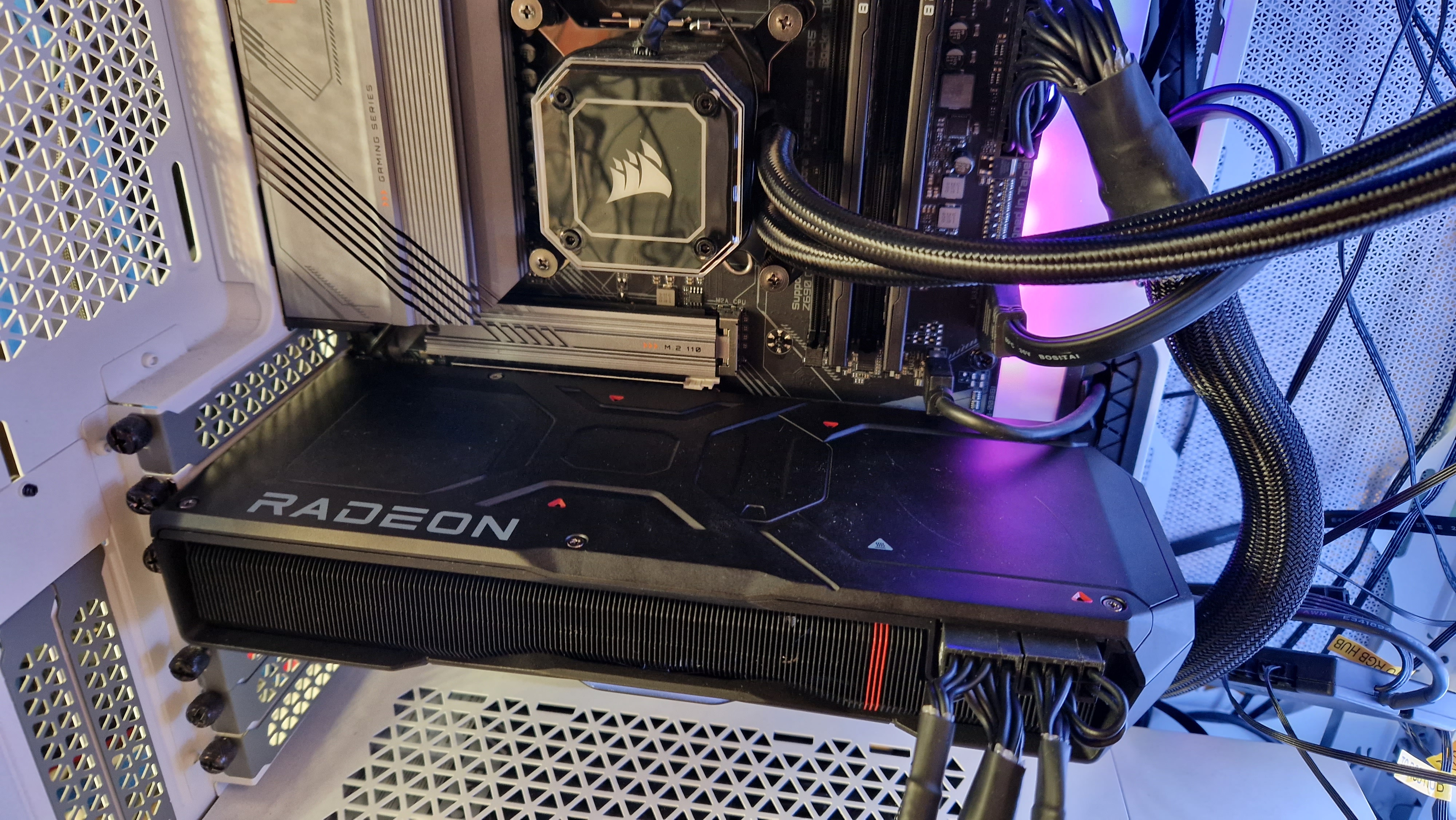
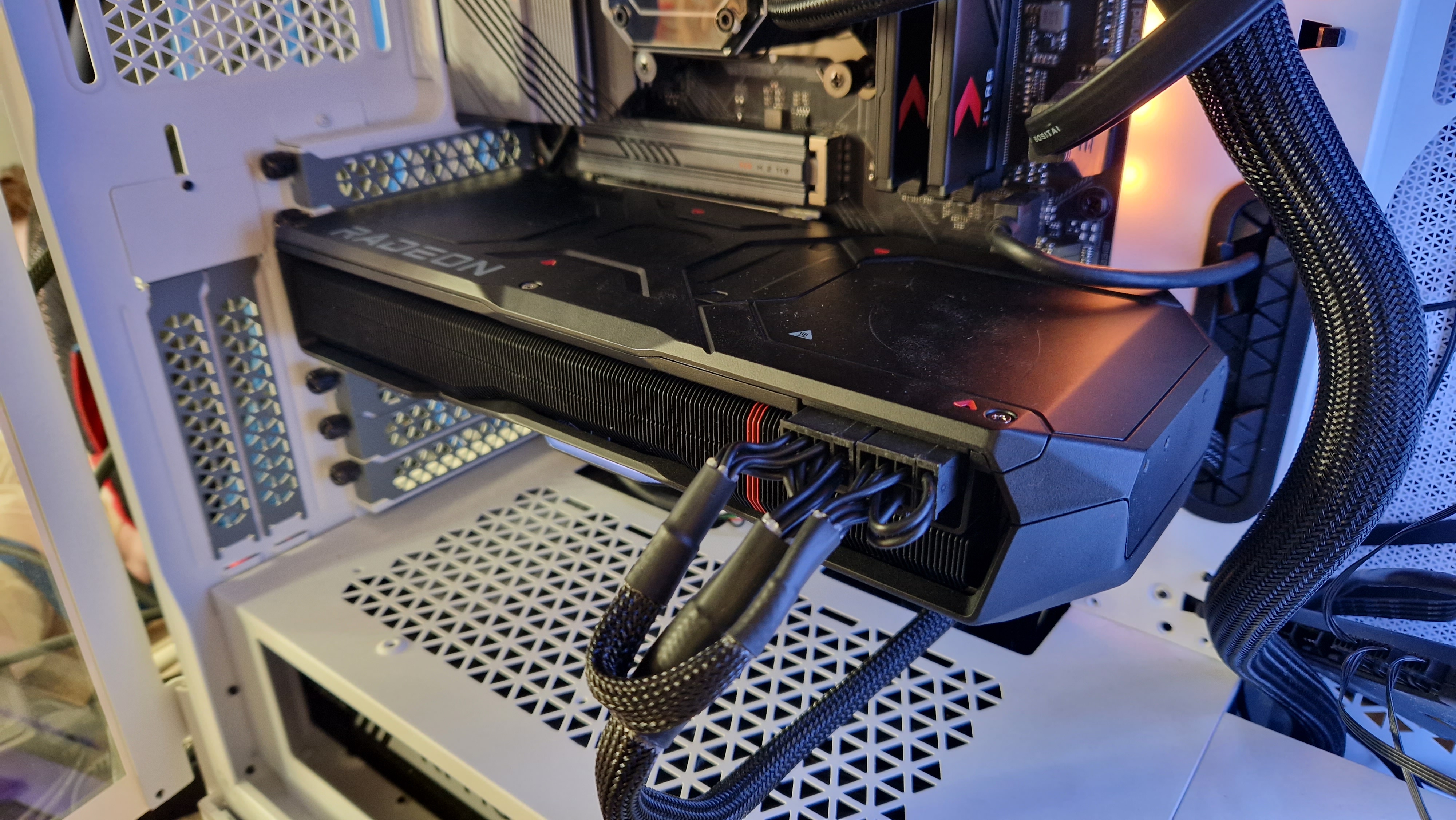
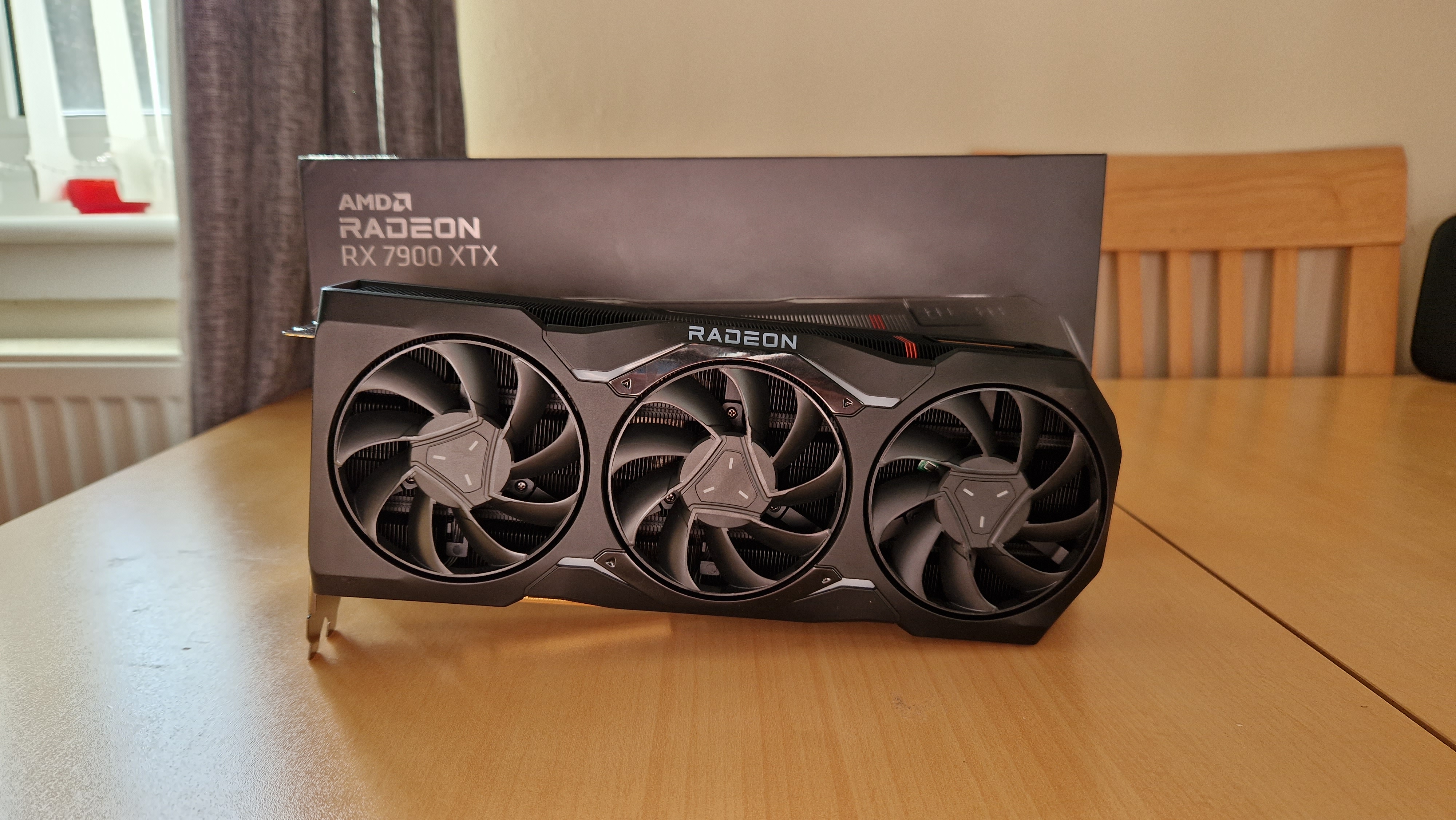
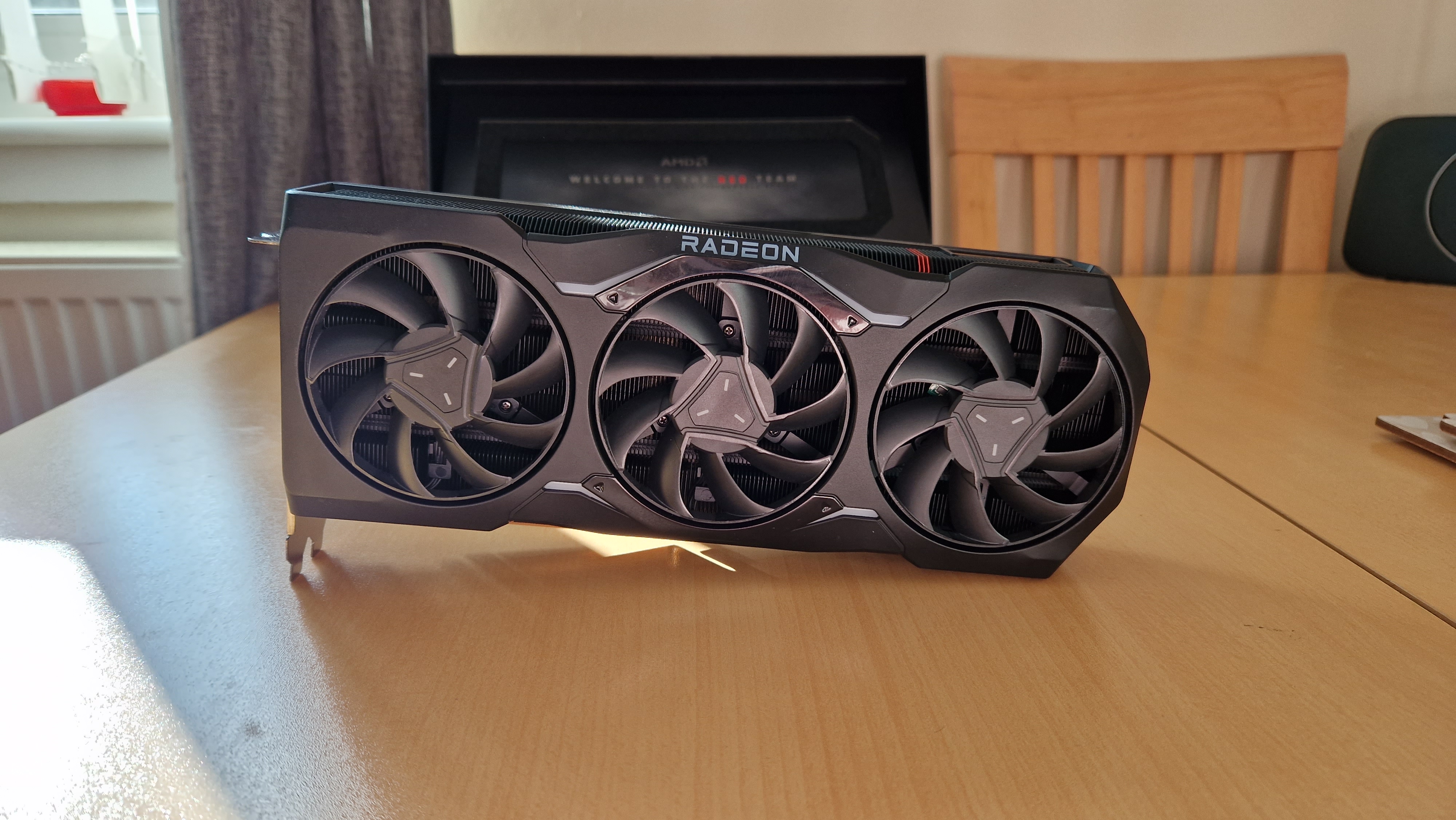
Specifications
Reasons to buy
Reasons to avoid
We have nothing but respect for the AMD Radeon RX 7900 XTX, especially since it had to follow the tremendous entrance of the RTX 4090. Wisely, the red team decided to fight Nvidia on price rather than performance, and the result is a GPU that offers up an incredible 4K performance for under $1,000 / £1,000.
✅ You want a great value 4K GPU: AMD pretty much wins the price fight this generation with its flagship, providing better than RTX 4080 performance for less.
✅ You prefer FSR 3: If you'd rather use AMD's upscaling tech, then the RX 7900 XTX will make full use of Fluid Motion Frames and other features.
✅ You'd like to try out 8K: Thanks to DisplayPort 2.1, you can actually output a 8K signal using this card and try out even higher resolutions natively.
❌ You'd rather buy the best: While the RX 7900 XTX is AMD's flagship, it can't keep up with the RTX 4090.
❌ You don't play at 4K: If you've got a 1440p monitor, you might be better off opting for the even cheaper RX 7900 XT instead.
Features: Kitted out with a flagship Navi 31 GPU and 24GB GDDR6 VRAM, AMD's premium contender occupies a weird middle ground. By that, we mean that while it's the company's top GPU, it's designed to take on the more reasonably priced RTX 4080, rather than punching above its weight at the RTX 4090. When it first launched, it actually lacked a way to fight Nvidia's DLSS AI tool suite, but it now has an excellent collection of FSR 3 settings and driver level Frame Generation at its disposal.
The latter can actually work with any game, while AMD's Fluid Motion Frames tech is making its way into more releases as the year progresses. Just like DLSS, there are caveats when it comes to latency and artificing, but we're still talking about tech that can fill in the gaps left by native performance.
Design: AMD cards normally feature a specific vibe, and the Radeon RX 7900 XTX is no exception. Its triple fan cooler and silver shroud won't be to everyone's tastes, but that design serves the noble purpose of keeping everything ice cold. Plus, this card's design retains a traditional set of dual 8-bit power connectors, so you won't have to wrestle with silly dongles to get everything hooked up.
Performance: There's a good reason that the RX 7900 XTX is our go to 4K GPU right now, and it's not just because it beats the RTX 4080 in the benchmark ring. Ultimately, it feels like AMD's flagship card is providing what we'd expect from top tier GPU of this generation, rather than showboating with enthusiast performance. UHD visuals are still going to be accompanied by high frame rates regardless, and the rat tracing experience at hand is pretty great if fancy lighting is your jam.
Verdict: Like it or not, the AMD Radeon RX 7900 XTX can't take on the RTX 4090, but it can offer up a more approachable 4K experience and keep the rest of Nvidia's squad at bay. We're also excited to see how this card improves as FSR 3 matures, and adding future AI abilities into the mix could be a game changer.
Read more: AMD Radeon RX 7900 XTX review
Peformance | 5/5 |
Design | 4/5 |
Features | 5/5 |
Software | 5/5 |
Price | 4/5 |
The best 1440p graphics card


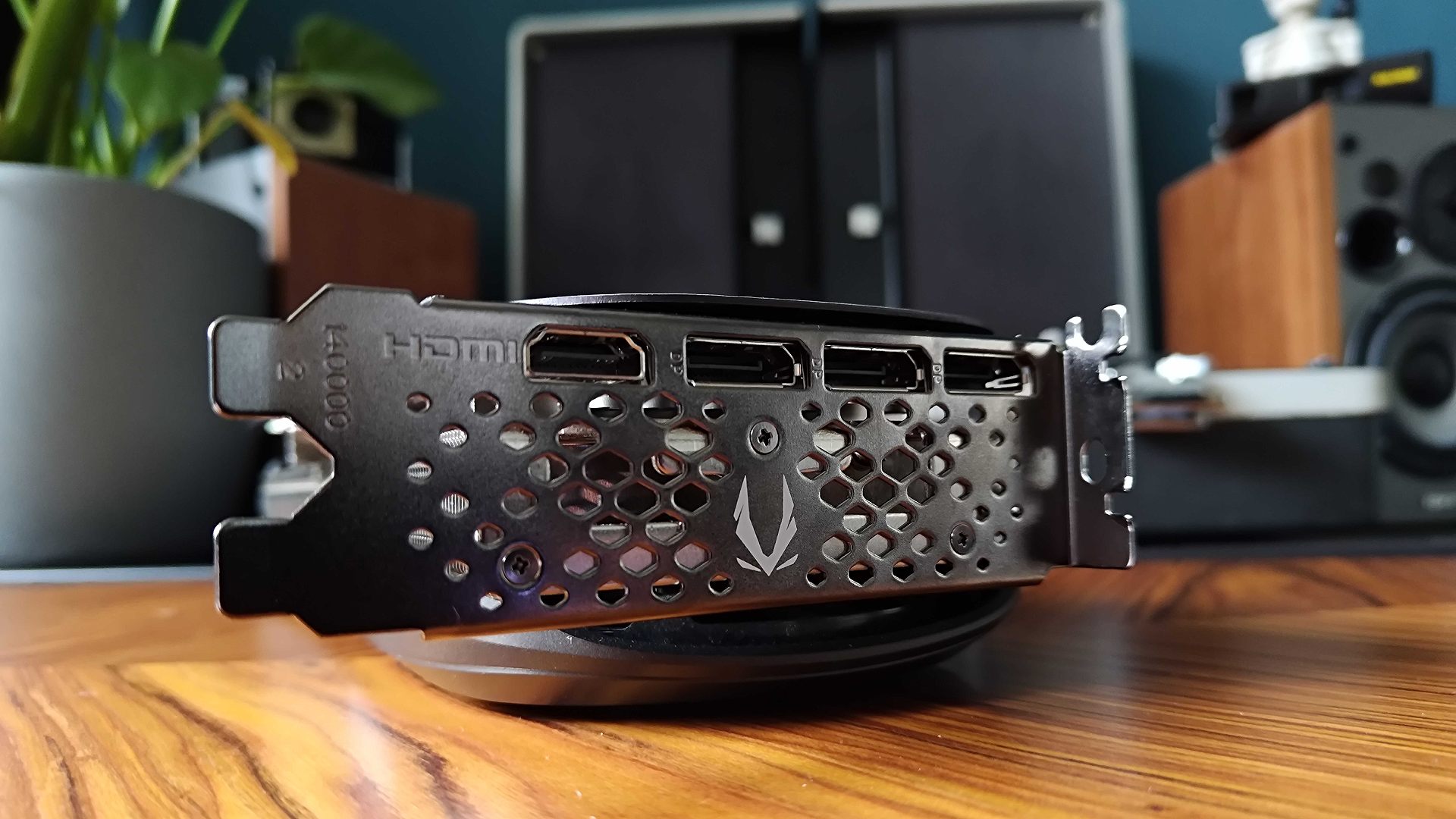
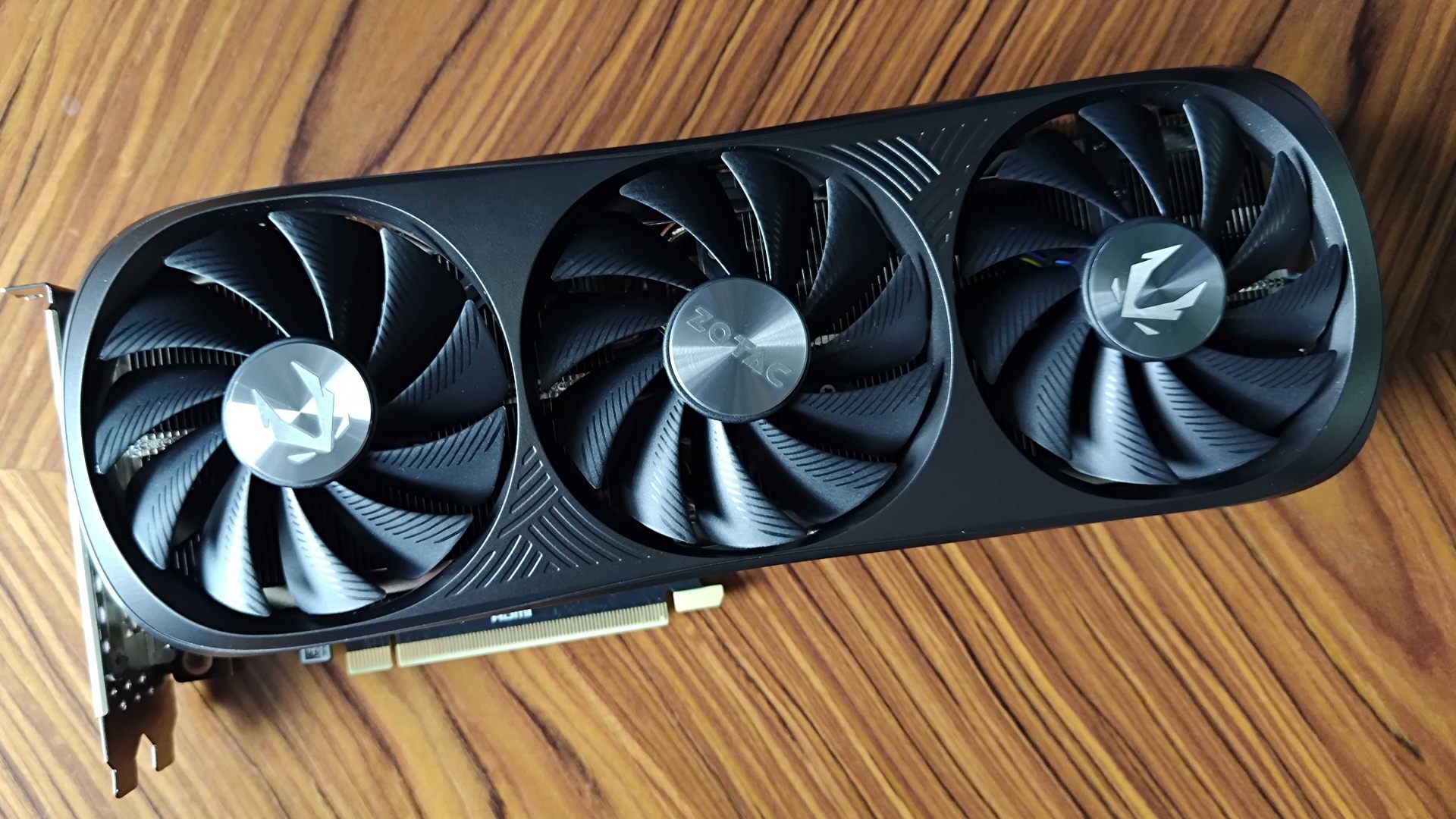
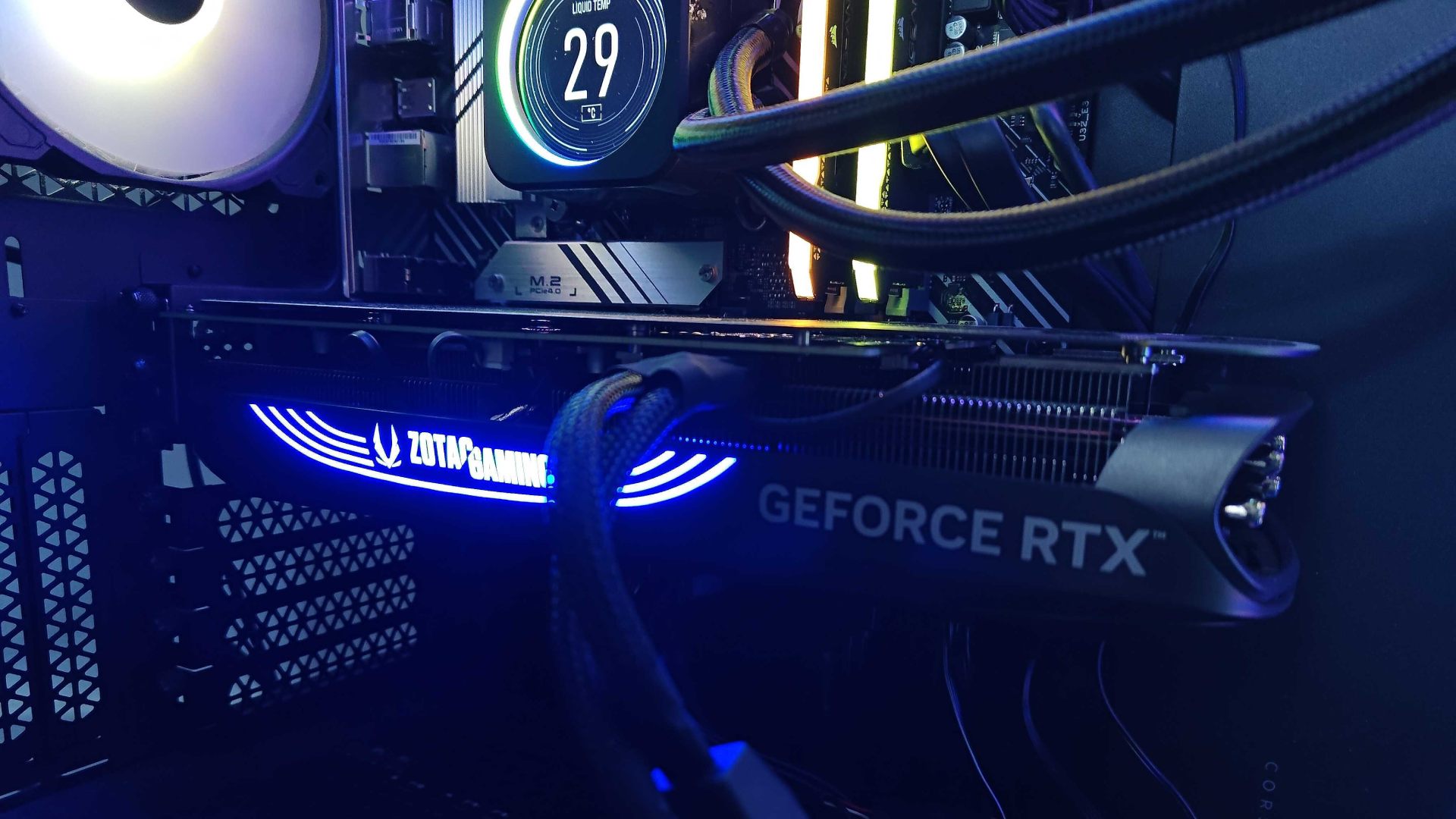
Specifications
Reasons to buy
Reasons to avoid
In a heroic effort to provide mid-range PC gamers with better performance, the Nvidia GeForce RTX 4070 Super swoops in with higher specs than the original. Better still, it's price hasn't changed, but we are slightly wary that the vanilla variant could drop to a distracting price as the year progresses.
✅ You want robust QHD visuals: If you're planning on sticking with a 1440p setup, this card will keep things fresh for a few years.
✅ You're keen on using DLSS: A price example of a card that excels with Nvidia's AI kit switched on, with Frame Generation providing a massive uplift.
✅ You want to do some 4K gaming: The RTX 4070 Super can achieve some nice results at 4K, so long as you use DLSS and tweak settings a little.
❌ You'd rather buy the original: The OG RTX 4070 is still available, and price cuts could make it the better option in terms of value.
❌ You've got an entry-level rig: Those of you planning on jumping from n older 60-class card might be better off checking out the RTX 4060 instead.
Features: We're still slightly grumpy about the fact the RTX 4070 Super comes with 12GB GDDR6X RAM. However, that's perhaps not a deal breaker since it has a higher core count and slightly faster clock speeds than the original. Those improved specs go a long way to pushing this card to a slightly higher 1440p performance standard, and the usual DLSS and Frame Generation tricks are to hand to make 4K gaming a possibility.
Design: We used the Zotac Trinity RTX 4070 Super for our review, and it's admittedly a chonker compared to most other mid-range models. It wields the triple fan configuration as the company's RTX 4070 Ti models, and it takes up the same amount of space as a premium GPU as a result. That's not entirely a bad thing, as the bigger shroud and extra fans result in nice low temperatures, but it could be a pain you've got a smaller case with a traditionally sized card. If you reckon that could be an issue, we'd suggest browsing for a two-fan variant instead.
Performance: When it comes to QHD gaming, the RTX 4070 Super has it in the bag, making short work of 1440p visuals in games like Cyberpunk 2077, Hitman 3, and Total War: Warhammer 3. Across the board, we were able to reach 100fps without any upscaling assistance, but switching DLSS and Frame Generation on will help you satiate the best gaming monitors and their speedy refresh rates. Even 4K is pretty smooth when using Nvidia's AI suite, even if there's some scaling shenanigans involved to make it happen.
Verdict: Nvidia's refresh has effectively transformed its mid-range offering into something that's hard to beat, and the RTX 4070 Super deserves the QHD crown. If you're planning on sticking with 1440p monitors for a while, this 70-class card should stop you from thinking about upgrades for a while, provided a potential RTX 5070 doesn't rock up and change a fundamentals of mid-tier gaming.
Read more: Nvidia GeForce RTX 4070 Super review
Peformance | 4/5 |
Design | 3/5 |
Features | 5/5 |
Software | 5/5 |
Price | 3/5 |
The best 1080p graphics card
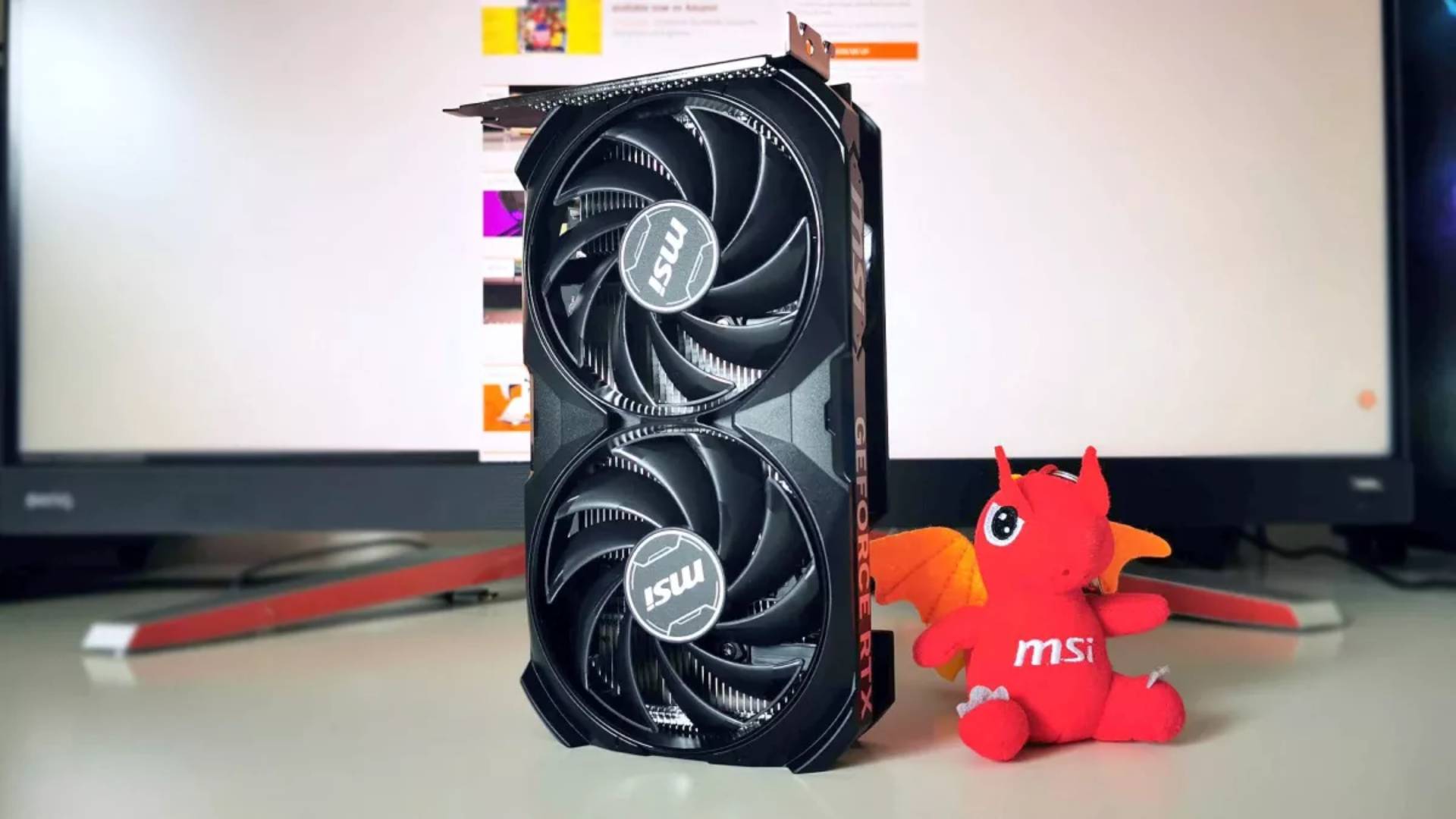
Specifications
Reasons to buy
Reasons to avoid
Coming in at $299, the Nvidia GeForce RTX 4060 is the cheapest of the Lovelace bunch yet. However, don't let its lower price fool you, as it's a punchy 1080p GPU that can actually handle a bit of 1440p and 4K with DLSS 3 enabled. You could say it relies on Frame Generation and fancy AI upscaling a bit too much, but the results speak for themselves when you can technically play demanding ports like Returnal without performance caveats.
✅ You want top 1080p performance: The RTX 4060 is the card to beat at this price point when it comes to Full HD gaming, providing a 1080p experience without compromise.
✅ You want to play older games: For under $300 / £300, you'll get a card that won't even flinch when handling older Steam games, and some will happily run at 4K.
✅ You need a smaller GPU: Nvidia's entry-level card is fairly dinky, meaning it's more likely to fit in even the smallest of cases.
❌ You want something more futureproof: Entry-level cards tend to age faster than high-spec alternatives, and the 4060's 8GB VRAM could be an issue down the road.
❌ You're looking for a class upgrade: Splashing out on the RTX 4070 will feel like more of a leap for those of you with slightly older GPUs within the same class.
Features: Just like the AMD Radeon RX 7600, the RTX 4060 is insistent that 8GB is enough VRAM for 1080p gaming in 2024. We wouldn't say that's entirely incorrect, but it will mean that future endeavours and ever improving textures could become an issue down the road. Nevertheless, this card provides one of the most solid entry-level experiences right now thanks to its DLSS and Frame Generation arsenal, making up for any pitfalls tied to its scaled down AD106 GPU.
Design: If it's a dinky GPU you're after, the RTX 4060 won't disappoint. The MSI version we checked out at launch is small enough to fit in most small cases, and the fact it uses a traditional 8-pin power connector will prevent any awkward dongle situations. In terms of looks, most models are pretty minimalist, meaning you won't have to worry about intrusive shrouds getting in the way of your tiny build plans.
Performance: We put the RTX 4060 through our usual benchmarks, and it managed to outpace the RTX 3060. We even ran specific RTX 4060 Cyberpunk 2077 tests and enjoyed around over 100fps at 1080p with all the ray tracing trimmings using DLSS 3. The GeForce tool even makes 4K possible on the entry-level card, as it achieved 72fps in Hitman 3, albeit with ray tracing set to one side.
It's worth noting that if you're looking to boost fps without picking up an RTX 4070, you'll probably want to consider the Nvidia GeForce RTX 4060 Ti. However, while the souped up version offers higher 1080p frame rates, it costs $100 more, and we reckon the vanilla RTX 4060 hits more of a sweet spot.
Verdict: Overall issues with Nvidia's RTX 4000 pricing and reluctance to offer more than 8GB RAM at entry-level, the RTX 4060 is a solid 1080p option that isn't going to disappoint. That's particularly true if you're one of the many Steam players out there still using a GTX 1660 today, as while the 2019 card is still a budget favorite, it's worth considering an entry level Lovelace model over the aging Turing card.
Read more: Nvidia GeForce RTX 4060 review
Peformance | 3/5 |
Design | 4/5 |
Features | 5/5 |
Software | 5/5 |
Price | 5/5 |
The best value graphics card
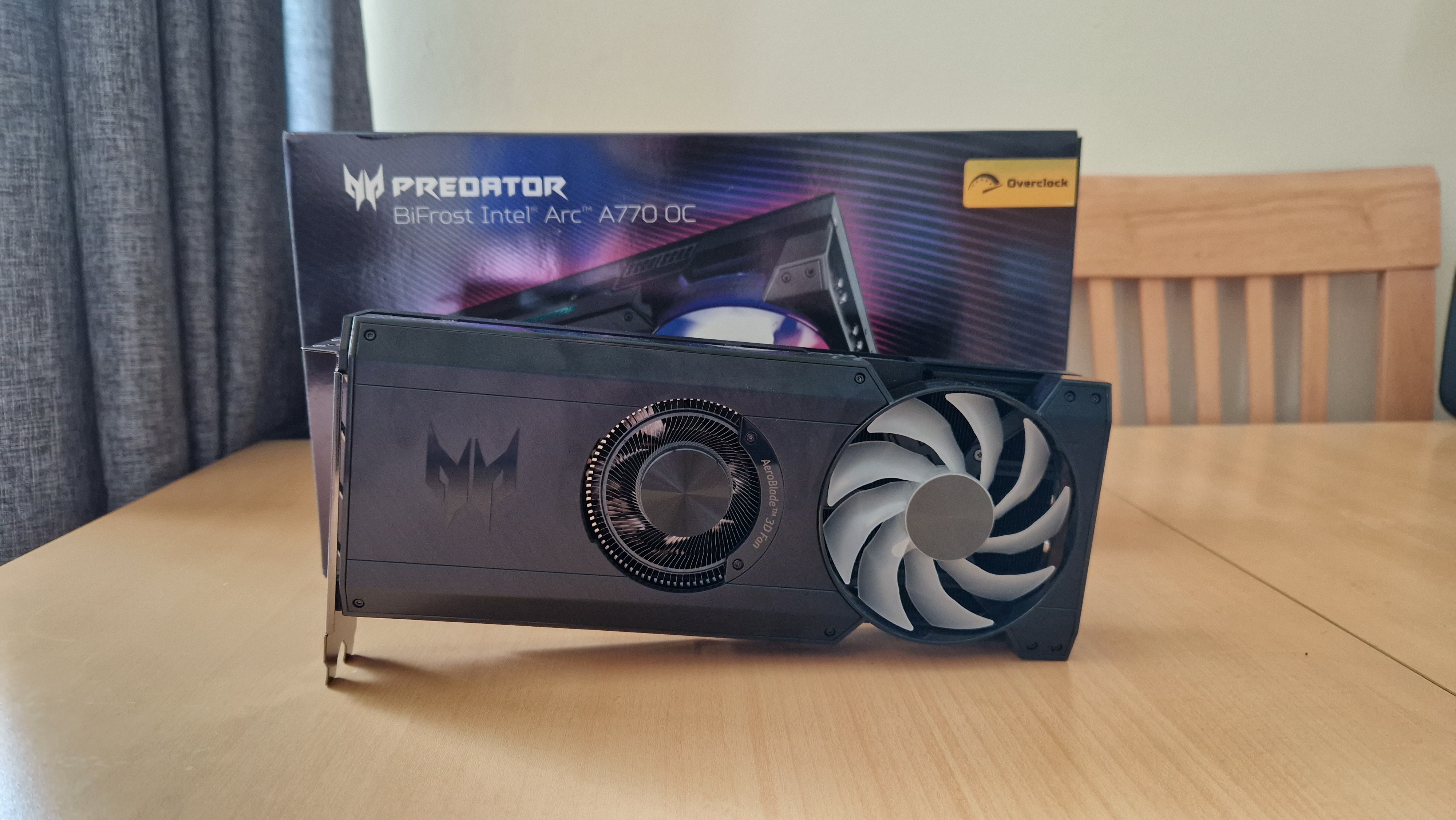

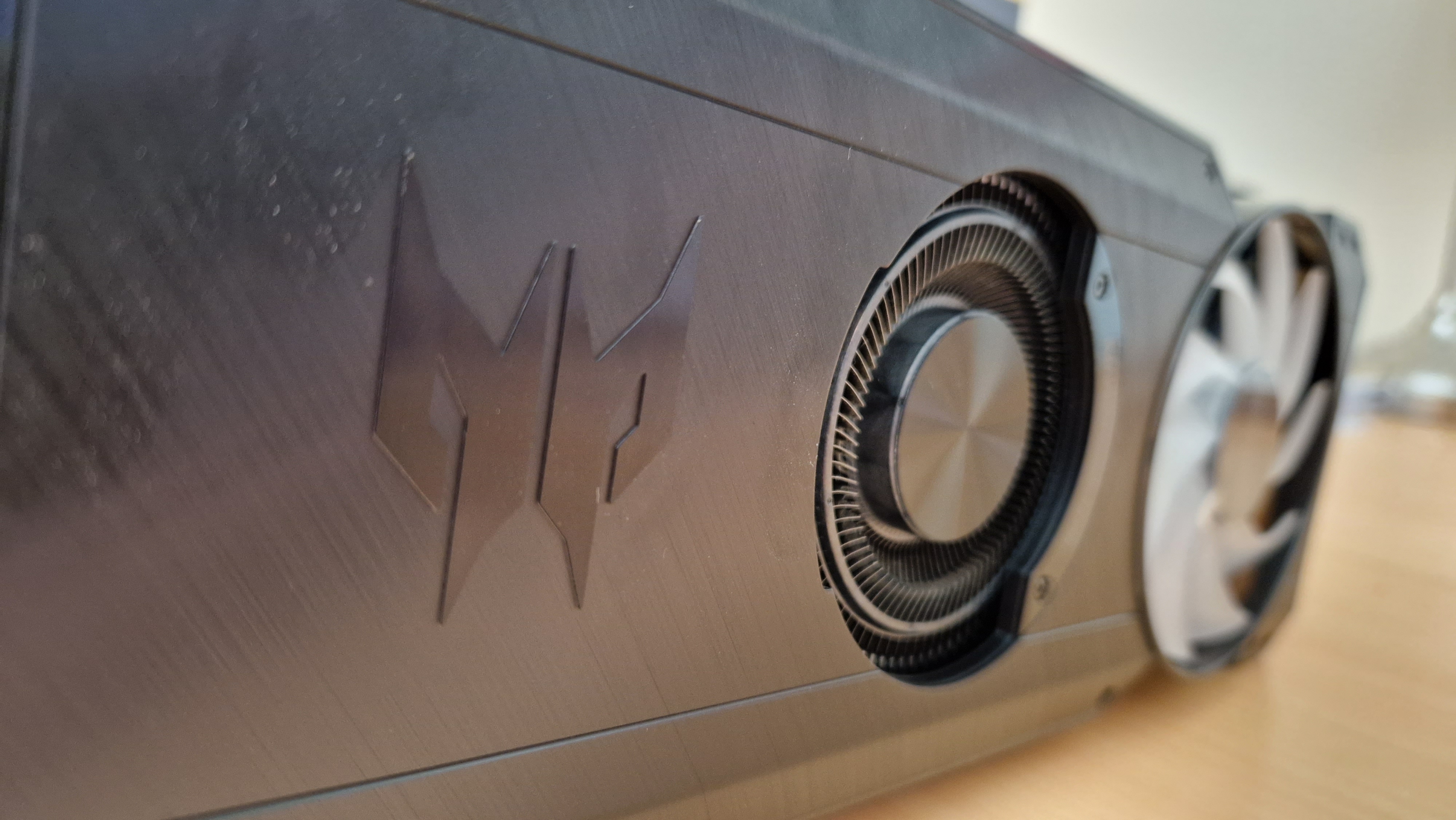
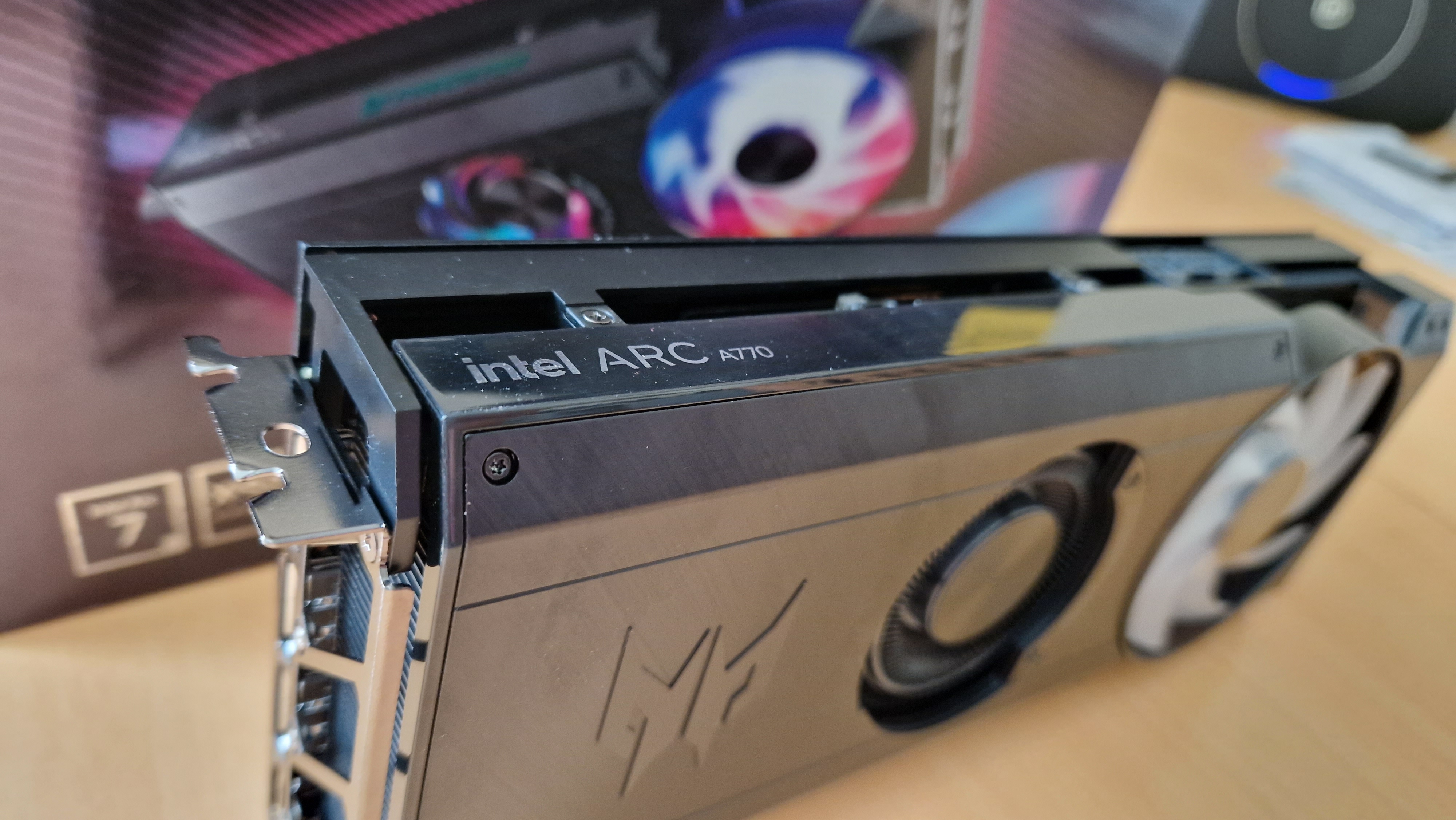
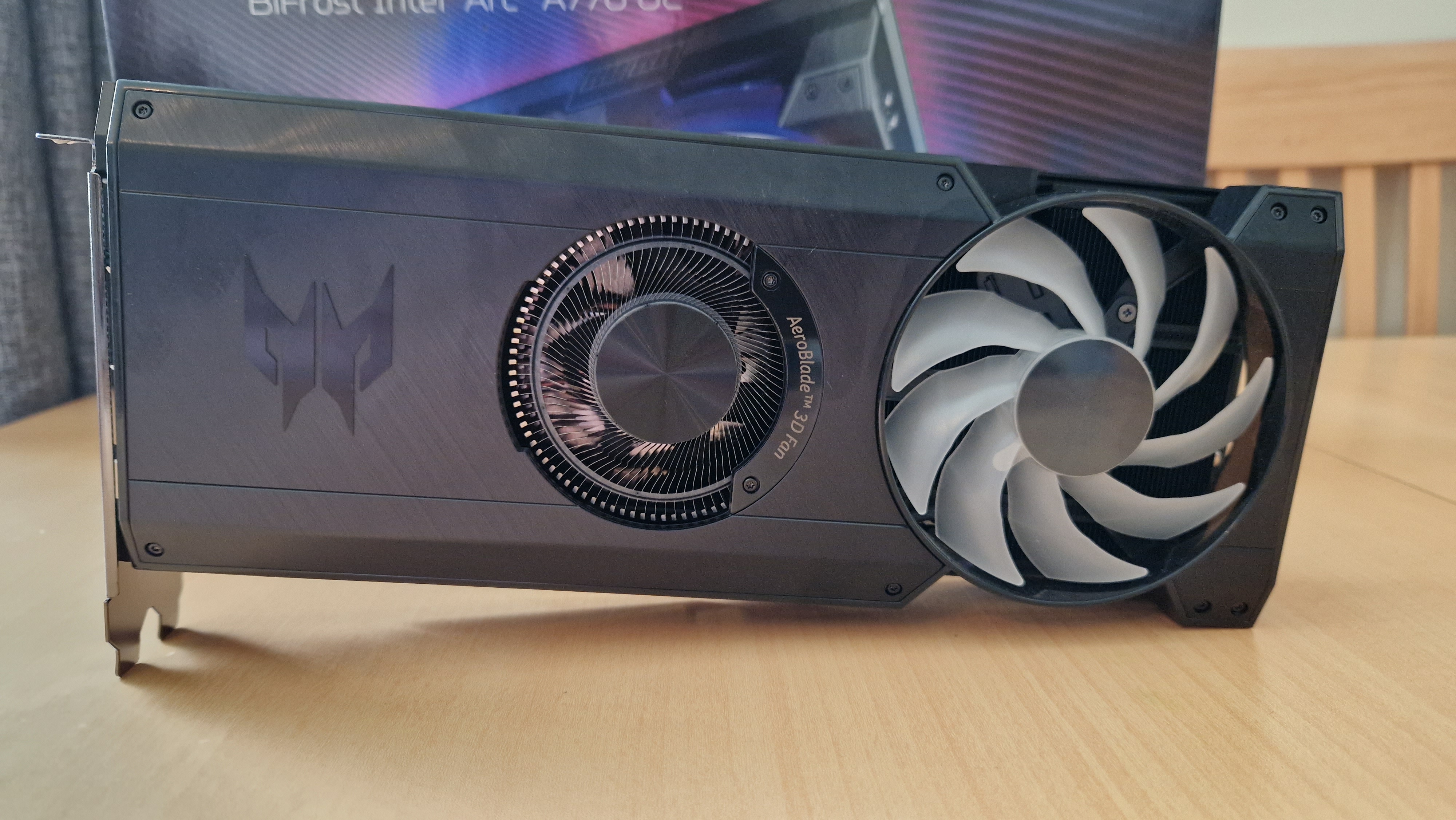
Specifications
Reasons to buy
Reasons to avoid
Intel makes graphics cards? Yes! And the Arc A770 is serves as a 16GB light in a dark world filled with 8GB entry-level GPUs. Gags aside, the flagship Alchemist card actually packs more value into its shroud than most options out there, making it a solid option for players who want to make their dollars stretch.
✅ You care about value: When it comes to performance per dollar, the Arc A770 provides a great array of specs and features.
✅ You've got a lot of classic games: The A770 can handle new releases, but it'll excel when it comes to running your Steam backlog.
✅ You want to bet on an underdog: Intel is fresh to the GPU scene, and while its venture got off to a rocky start, Arc graphics cards are getting better with every driver update.
❌ You want AI features: The A770 doesn't quite have any tools that can combat DLSS, and that could matter when it comes to pulling off performance tricks in new games.
❌ You'd rather wait for next-gen: New Battlemage Arc GPUs could blow Intel's Alchemist out of the water later this year, so waiting might be wise.
Features: Intel arguably makes the best gaming CPUs around, and while AMD might have an issue with that statement, it might want to focus instead of guarding its budget GPU crown. Packing 16GB GDDR6 VRAM and a 2,400MHz boost clock, the A770 packs elevated specs for not far off the price of a RX 7600. Admittedly, Arc models haven't gained powers on par with DLSS and FSR 3 quite yet, but it's early days for the blue team's venture into graphics card land.
Design: Funnily enough, the Intel Arc A770 we tested shares DNA with the RX 7600 on our list, as both are Acer Bifrost models. That means that the two graphics cards use the exact same shroud and fan configuration, with that built-in blower helping provide a similar result in terms of cooling. Just like AMD's budget model, you'll also be able to hook straight up to your PSU with an 8-pin connector, and that's a big boon if you've not got much space to work with.
Performance: In-game benchmarks were impressive enough, but we found in testing that 4K 60fps was achievable in Returnal, Cyberpunk, and Hitman 3 if we turned the settings down a touch. With that 16GB of GDDR6, a boost clock of 2400MHz, and 19.66TFLOPs to work with, there's a lot of headroom for great gaming performance here, and for under $300, that deserves your attention. Even older games that use DirectX11 or older, which the Intel Arc's struggled to find deal with originally, are now handled with ease.
Verdict: Acer's model is one of the pricier 16GB A770s around, but all models arguably make for the best value graphics card around considering the specs and features on offer. Now that the Intel Arc B580 is a thing, it's entirely likely it'll replace the Alchemist option here, but I'll let you know once I'e completed testing.
Read more: Acer Predator BiFrost Intel Arc A770 OC review
Peformance | 3/5 |
Design | 3/5 |
Features | 4/5 |
Software | 3/5 |
Price | 5/5 |
How we test graphics cards
Why you can trust GamesRadar+
At GamesRadar, we take an encompassing approach to testing the best graphics cards with a strict set of benchmarking tools before the GPUs end up on our list. First and foremost, we use the likes of 3DMark for quantified and comparable figures in our extensive write-ups. Secondly, and arguably most importantly, we use demanding games with ray tracing enabled, if applicable, to see how the graphics cards hold up in real-world performance.
You can find out how we test graphics cards in our full GamesRadar Hardware Policy.
Best graphics cards: Frequently asked questions
Graphics card vs GPU - what's the difference?
Graphics card and GPU are both used interchangeably, but they are two different things. The term 'graphics card' refers to the entire PC component, including its fans, VRAM, PCB, and 'Graphics Processing Unit', which means a 'GPU' is the chip living within your card of choice.
What is the top gaming graphics card right now?
The Nvidia GeForce RTX 4090 is currently top of the food chain when it comes to raw graphics card power. Not only can it provide phenomenal 4K performance while maintaining triple digit frame rates, but it's also armed with DLSS AI upscaling, which should help futureproof your PC as more demanding games emerge on the scene.
How much does a good graphics card cost?
Graphics card prices will vary based on the experience you're trying to achieve, and great options are available for as little as $200. Such cards will largely cater to 1080p resolutions and reduced settings, but up-spending to a GPU with more VRAM and faster clock speeds will remedy that. Just keep in mind that if you want a 4K setup with zero compromises, you'll perhaps need to pay around $1,000 for something like an RTX 4080 Super, with the RTX 4090 catering to enthusiasts willing to spend far beyond a grand.
What's the minimum memory for a graphics card
In 2024, we wouldn't recommend using a graphics card with anything less than 6GB VRAM. While older releases will still run using less memory, you'll need more to run games at 1080p without major frame rate dips. If you'd rather not dial back settings, you'll want to make sure you go for something with at least 8GB, and you'll find that card designed for 1440p and 4K gaming will boast up to 16GB and beyond.
Looking to pay less for a GPU? Check out the best cheap graphics card deals and bag a budget AMD or Nvidia model. You might also want to check out our best gaming CPU picks if you're putting to gether an entire rig.
Weekly digests, tales from the communities you love, and more

Phil is currently the Hardware Editor at GamesRadar+ who specialises in retro gaming, the best gaming handhelds like the Steam Deck, and more modern components like graphics cards. Having spent years offering up classic console advice and over a decade as a gaming journalist for big names like TechRadar, The Daily Star, the BBC, Den of Geek, and many more, Phil now dedicates their days to covering the latest news and offering up invaluable setup advice.
- Duncan RobertsonHardware Editor


